The Battle of Speedmasters – Moonwatch Professional vs. 60th Anniversary
Two of the greatest discontinued models.
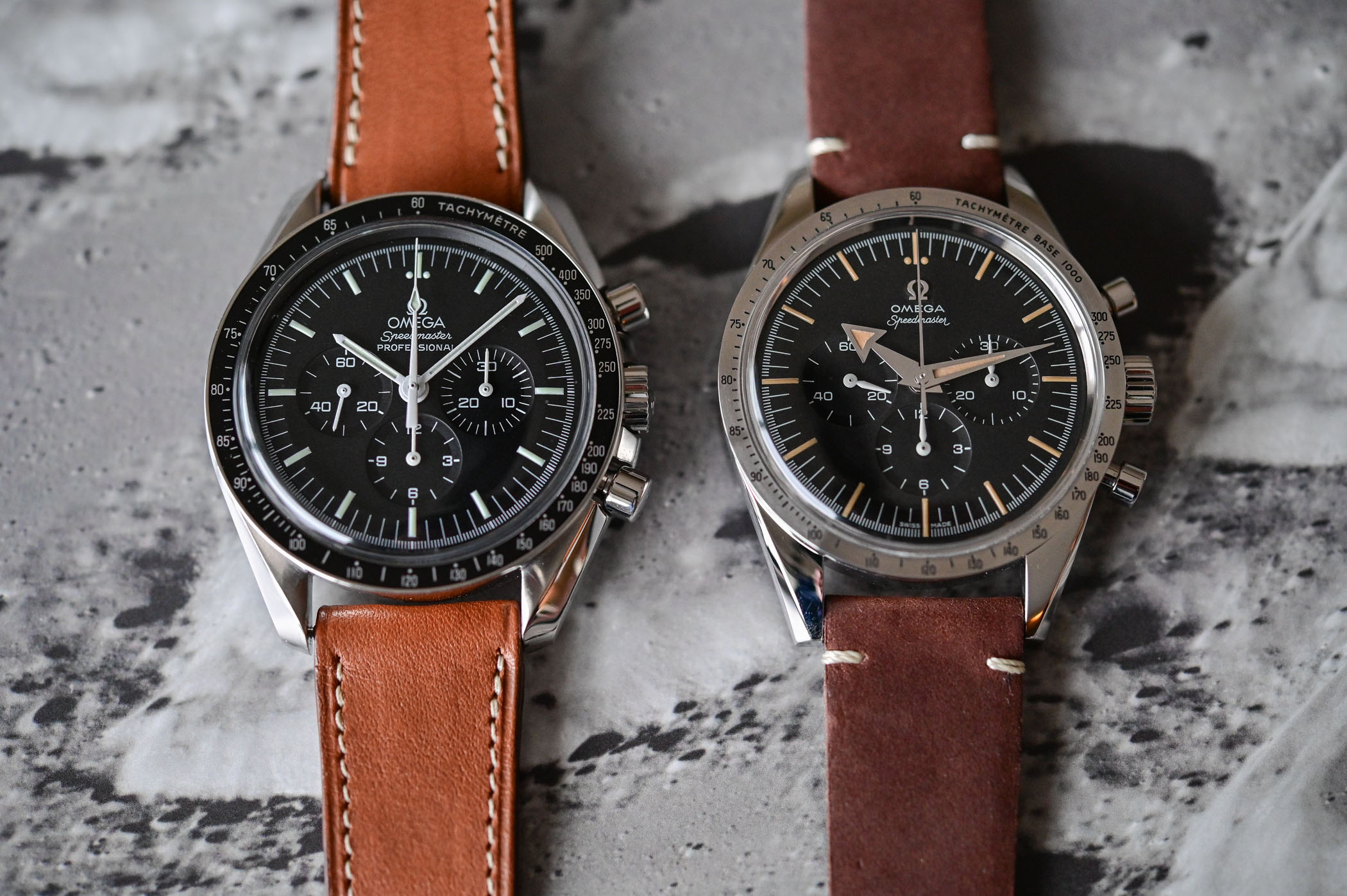
Today we look at what certainly are two of the best Speedmaster models. On one side is a true classic, the previous generation Moonwatch Professional – for all the details on the new one, check this in-depth article. On the other side is a retro-looking watch, the 60th-anniversary edition released as part of a historically-inspired trilogy. You might ask why looking at two discontinued models? First, simply because we had these two watches with us at the office and that gave us the opportunity of a comparison. Second, because all watch enthusiasts don’t necessarily seek and buy new timepieces. Finally, some watch enthusiasts don’t buy the watch right at the time of launch and have to wait before pulling the trigger. We’re going face-to-face with two almost identical but, in fact, very different watches.
Quick background
The Omega Speedmaster is a watch that needs no introduction anymore, being one of the most iconic models ever produced by the industry and a cult watch for Omega. Born in 1957, as part of a trilogy of professionally-oriented watches (the Speedmaster CK2915, the Railmaster CK2914 and the Seamaster 300 CK2913), way before its space background, the Speedmaster was first the brand’s vision of a watch for racing drivers, equipped with a tachymeter scale to measure average speeds.
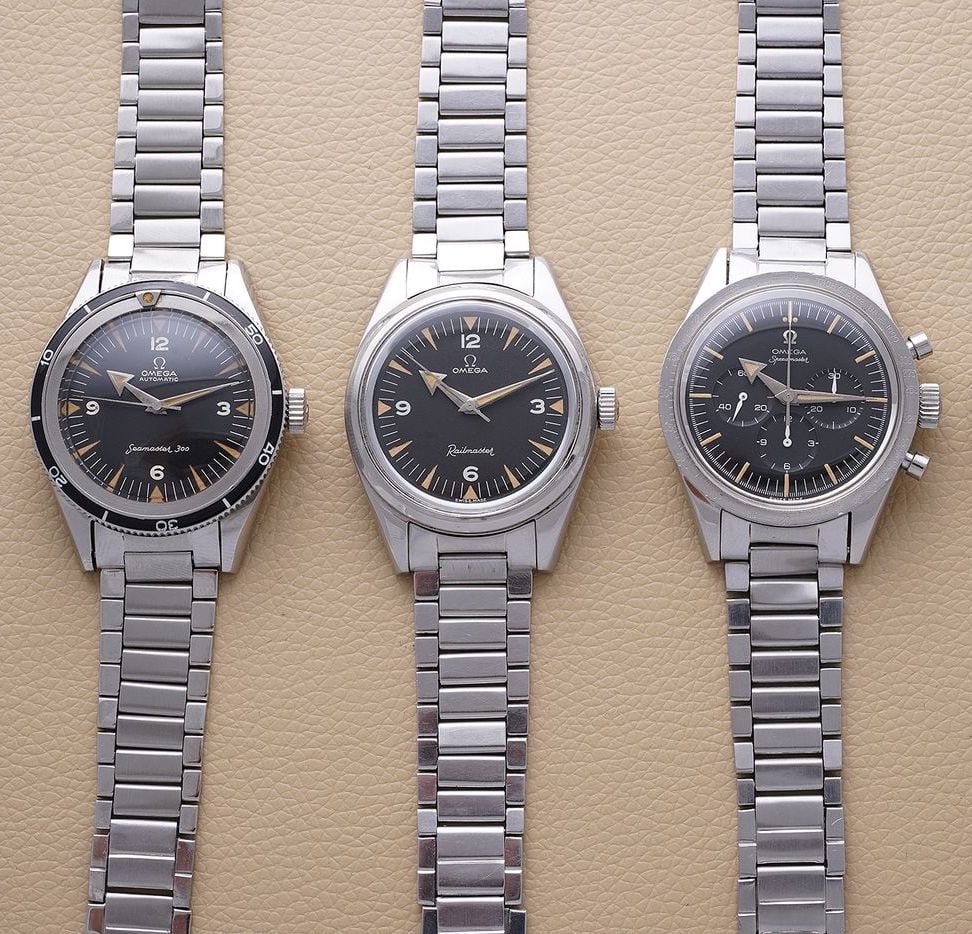
The main specificity of the Speedmaster, besides being a tri-counter and two-pusher chronograph, was the location of its tachymetre scale. Instead of appearing on the dial, the scale was relocated for the first time to the exterior of the watch, on a bezel surrounding the crystal in order to enhance legibility. Many updates have been made to the watch in its earliest days, changing hands, dials, case shape, bracelets and crowns more often than the actual reference of the watch changed. The most important step in the life of the Speedmaster, an event that forged its legend, has to do with Space exploration and NASA. The first Speedmaster worn in space was on astronaut Walter Schirra’s wrist during the Sigma 7 mission of the Mercury programme in 1962. Back then, the watches were still privately-owned by astronauts. In 1965, NASA decided to procure watches to its crew members, and after a comprehensive testing procedure under the direction of James Ragan, the Speedmaster was declared “flight-qualified by NASA for all manned space missions.”
As the certified watch for astronauts of Gemini and Apollo missions, the Speedmaster made its first official flight into space onboard the Gemini III mission and on the wrists of Virgil (Gus) Grissom and John Young. The most important step in this model’s life occurred on 21 July 1969, as Neil Armstrong entered the annals of history as the first American astronaut to set foot on the Moon. Yet, he wasn’t wearing his watch but Buzz Aldrin was, with his Speedmaster strapped over his bulky spacesuit with Velcro.
Following this epic walk on the Moon, the Speedmaster became known as the Moonwatch and, for the following 50 years will remain continuously produced, yet practically unchanged – to the exception of mechanical updates and more modern materials, the look, shape and overall design of the Speedmaster has been forged in 1964.
The CK2915, the inspiration behind the 60th-anniversary edition
When Omega released its 1957 Trilogy re-edition in 2017, commemorating the 60th anniversary of the brand’s first professionally-oriented collection, the idea was clear: creating models visually as faithful as possible, by scanning historic watches from the Omega Museum and recreating them with modern technical and mechanical solutions, yet with sheer respect for their aesthetics.
As such, the Speedmaster 60th Anniversary watch is directly modelled after the first-ever Speedy, the reference CK2915-1 from 1957. This watch, the first draft of a continuously-evolving story, already showed many of the iconic features the Speedmaster is known for, however, it also bears multiple unique features. Housed in the early symmetrical case, it is immediately recognizable thanks to its brushed stainless steel bezel and its broad-arrow hands – two features that will be discontinued on the following model, the CK2998. It is powered by the legendary Calibre 321, has a flat dial with applied Ω logo – the step dial only appeared later, on the CK2998 – and it had luminescence thanks to radium-based material.
Being the first of a long lineage and having low production numbers, the Speedmaster CK2915’s popularity has grown to become a collector’s dream. it isn’t uncommon to see some examples sold for over EUR 100,000 at auctions. Clearly, not a watch many enthusiasts can afford. Thus, if you want the look and feel of the 1st generation Speedmaster, the 60th-anniversary model is the best option you can get.
The Professional Moonwatch’s background
The standard Moonwatch, whether the previous generation (ref. 3750.50) or the model that has been presented earlier this year, are both direct descendants of the first “professional” Speedmaster. Until late 1963, Speedmaster watches were so-called straight lugs (symmetrical case) with no Professional mention. The 42mm asymmetrical case, the one that we today see as the classic shape, has been introduced in 1964 with the reference ST 105.012 together with the Professional mention. Of course, as you’d expect, the name “Moonwatch” only appeared in 1969, after the Apollo 11 mission and the Moon Landing.

This professional case, with its lyre-type twisted lugs and protection for the crown and pushers, is almost unchanged since 1964 and has only been altered by minor updates. Same goes for the hands and dial, once again almost identical today expect minor changes such as the flat dial replacing the step dial or the printed logo in place of an applied one. Still, the display and the overall style is in 2021 almost the same as what used to be found in the late 1960s. At first equipped with the Calibre 321, the watch will receive a new movement in 1968, the cam-operated calibre 861, later replaced by the Calibre 1861 (a minor evolution) with the reference 3570.50. Of course, things have drastically changed this year with the new Master Chronometer calibre 3861, however, the design retains most of the classic elements of early Professional Speedmasters.
Face-to-Face – Moonwatch Professional vs. 60th Anniversary
As said, the idea here is to compare two of the greatest modern, yet discontinued Speedmaster watches. Sure, a non-watch enthusiast will probably think these are two very close models, with only minor visual differences. However, once you know a bit your Speedmaster history, you surely understand that we’re here talking about two very different – should I say opposite – models. One is a deliberately vintage-inspired model, made to look like an old watch, with fauxtina and faded colours. The other is a contemporary watch, which doesn’t want to look vintage, even though the Speedmaster itself, being almost untouched for close to 60 years, has a certain retro charm. In short, it is a classic. So yes, it is quite interesting to see them one next to another.
And for that, we’re going to look at all the elements… case, bezel, dial, movement. And apart from an identical engine, nothing is actually is the same in these watches… As you’ll see below.
Case
Starting with the case of both watches, you’ll notice a major difference. Basically, it is all about asymmetrical versus symmetrical, professional versus pre-professional, lyre lugs versus straight lugs. Shape, proportions, finishing are all distinct and result in watches that look and wear quite different. Actually, more than you’d expect at first.
On one side we have the classic Speedmaster Professional Moonwatch, with its asymmetrical case. Equipped with the twisted lugs – also named “lyre” – and solid shoulders that are meant to protect the crown and pushers, this shape is the one most often associated with the Speedmaster. It was launched in 1964, and became quickly accepted by NASA due to the increased protection offered on two crucial elements of the watch. It is a shape that almost didn’t change in 57 years of existence, a shape that is associated with space exploration, a shape that is recognizable among hundreds of watches. The asymmetrical case of the Moonwatch Professional is 42mm in diameter and 14.3mm in height (a dimension that has been slightly reduced on the 2021 edition). At first, it seems to be a rather large watch, however, the case is fairly compact and well designed. Lug to lug is 48mm and most of the height is located on the caseback and crystal, with a relatively thin caseband.
The other model, the Speedmaster 60th anniversary, is a different animal. Its shape, named straight lugs or symmetrical, has been directly modelled after a vintage example, respecting every single aspect of the older watch. As such, it has no protection for its crown and pushers, the lugs and caseband are flat and the case feels exactly like the vintage model. Looking at it now, in 2021, gives an interesting view on this watch… It still feels modern and sharp, not small and not delicate, so imagine how innovative this watch was when introduced in 1957. The proportions are very different from the Moonwatch, and differently distributed. The diameter is fairly compact, at 38.6mm and the height is of 13.9mm. Still, the lug to lug dimension is also 48mm here, meaning that the feeling on the wrist is that of a more modern piece. Below a chart with the actual dimensions, as measured by us:
Both Speedmaster models presented here are equipped with a synthetic crystal, the so-called Hesalite. While its use from the 1950s until the 1980s was guided by available materials, it is still in production today for a simple reason: it is preferred by NASA, as on the contrary of sapphire, it won’t shatter in multiple pieces if a shock occurs – something of importance with zero gravity. Both have the small Ω logo in the centre. The use of Hesalite makes sense on both watches, historically-speaking. In addition to that, it is also known to bring more warmth and pleasant distortions, participating in the charm of the Speedmaster. However, they are not the best when it comes to reflections and resistance to scratches.
Looking closely at the cases, you’ll notice that these are drastically different. The Speedmaster 60th anniversary is sharper, more elongated and more distinctive. The lugs are polished on top and have a pronounced bevel, just like the original model. They also have a more pronounced curvature and the strap sits lower. The sides are brushed and the caseback retains the historic double-step profile. Just like the CK2915, it also features only the Seahorse logo. Interestingly, this vintage re-edition has a slightly better water-resistance, at 60 meters. The crown, being unprotected, is extremely easy to actuate and winding is done with great comfort.
The Speedmaster Moonwatch Professional is, on its side, far more rounded and less “aggressive” despite its more robust vocation. The length/diameter ration being different too, the watch feels visually compact and the surface covered by the watch on the wrist is distributed differently. The sides have a strong polished bevel, while the “twist” inside the lugs and the sides of the case are brushed. The case feels flatter, as the strap is attached higher. The crown is well protected, which is a benefit if you intend to use the Speedmaster Moonwatch as a proper instrument, however, the downside is that the crown can be fairly difficult to wind. The caseback, with its space-related inscriptions, needs no introduction anymore. Water-resistance is rated at 50 meters. Note that the shape of the new generation Speedmaster Moonwatch has been slightly updated, with a different bevel on the side, new pushers and crown, new caseback and slightly reduce lug to lug and height.
Bezel – Steel vs. aluminium
Another major point of differentiation between the Speedmaster Moonwatch Professional and the Speedmaster 60th anniversary is the bezel. As for the rest of the watch, the bezel of the Moonwatch is a classic – dare I say iconic – element. Made of black anodized aluminium, it was one of the main evolutions of the second generation Speedmaster (CK2998), replacing the metallic bezel by this black insert. Providing far more contrast and far fewer reflections, it is a joy to use. Instantly legible, it has become a signature element of the Speedmaster. Here, in this context of a ref. 3750.50, we have a modern insert, with “dot beneath 70” and “dot diagonal to 90” – a configuration that appeared in the early 1970s. The new generation Moonwatch has a different insert, which respects the style of the 1960s editions.
The Speedmaster 60th anniversary, being a reproduction of the first-ever model (CK2915-1) is featured with a base-1000 tachymeter scale, engraved and filled in black over a brushed steel base. A distinctive element of the earliest versions of this chronograph watch, it greatly participates in the unique appeal of this limited edition. Visually, it also somehow enlarges the watch, making it more present than when it’s equipped with the more classic black insert. Finally, once you wear the watch, you quickly understand why Omega moved to a black insert in the second generation, since the brushed metallic surface is prone to reflections and legibility in direct sunlight, but also in low light, isn’t as great. However, the look is really special and that’s what matters in this vintage-reissue context. The final historic touch is, of course, the faithful reproduction of the scale, with “dot over 90” and vintage font.
Dial and Hands
Now that we’ve been looking at the external parts of the watch, it is time to look at another important part of the habillage, the dial. Here again, there’s an undeniable common DNA, however, the two watches also come with their own distinctive elements.
Starting with the Speedmaster 60th anniversary model, something important to note (which isn’t completely reflected in the photos here) is the colour. While most Speedies have a pitch-black dial, Omega has decided to give this limited edition some patina, and the dial is actually dark grey – as if a black dial would have faded with the time. It isn’t always obvious, as the colour mostly reveals itself outside, under direct light. Inside, you’ll see a dark anthracite (almost black) dial.
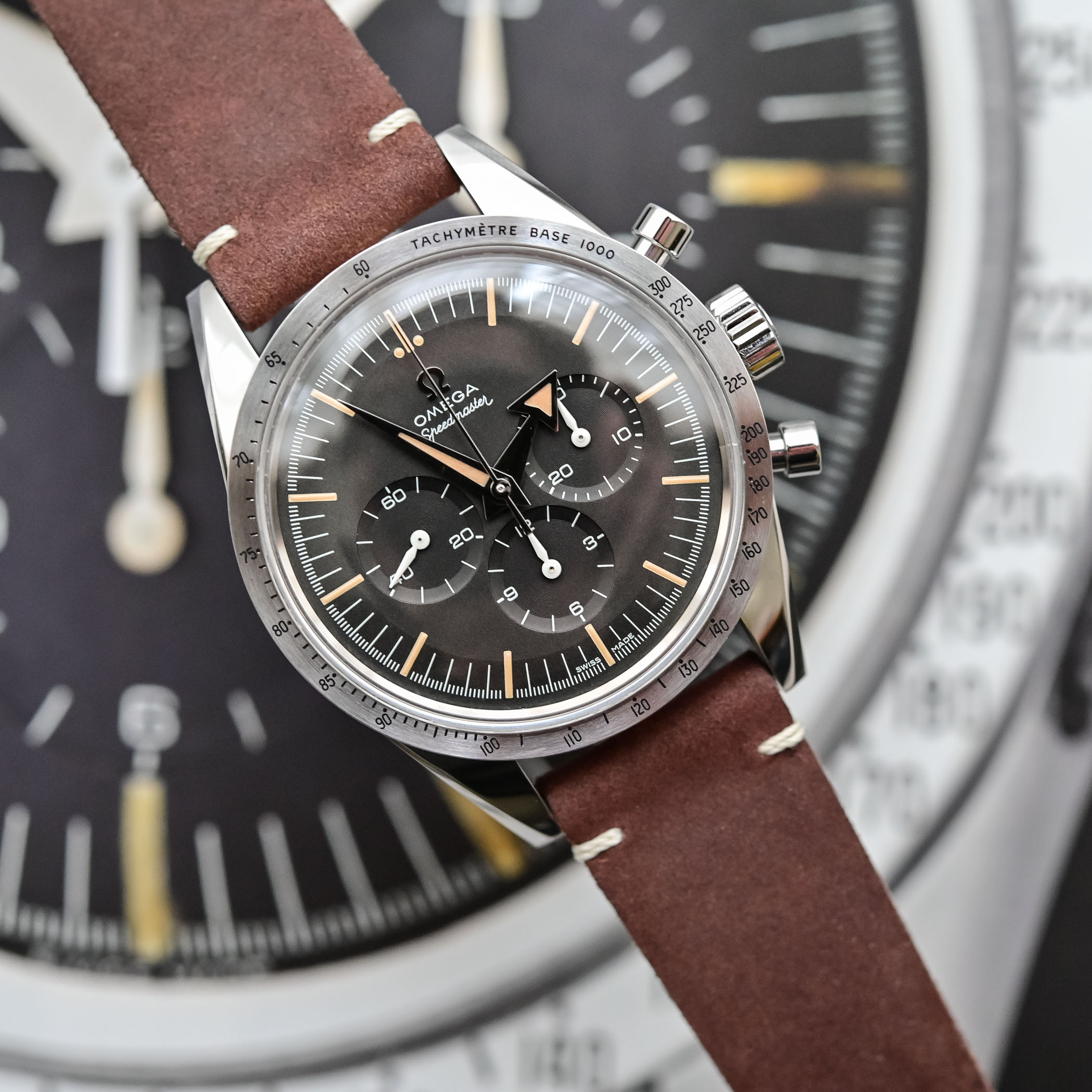
For the rest, Omega has worked intensively on the dial to make it as close as possible to the dial of the original CK2915-1. As such, it has a flat profile (no step dial here, as it came later), tall hour markers, recessed sub-dial and, two important things, an applied Ω logo and historic fonts for OMEGA and Speedmaster. If you look closely at this watch and compare it to a vintage model, the most obvious difference is the position of the Swiss Made mention, now above the seconds track, while it is underneath in the CK2915. In line with the faded colour of the dial, the indexes are painted in a relatively dark cream colour, which gives some vintage charm to the watch. The brand could have been even more precise by doing the luminescent paint in white, yet it would have resulted in a too modern looking piece in my opinion. I particularly like the use of fauxtina in this re-edition context.
Then, there are the broad arrow hands, a highly important and distinctive element of the first generation Speedmaster, of course, re-created here. Again, when using them on a daily basis and due to their polished surface, you understand why Omega moved to white professional hands, as they are simply more practical. However, these broad arrow hands are so iconic and so unique to this watch that they are one of the major elements to be loved here. In the same vein, the small hands of the sub-counters are so-called Alpha and are painted white, proving great contrast. Overall, an impressive job by Omega in terms of faithfulness and execution.
Here, we can easily assume that most watch enthusiasts, even the most novice of us, will know what they’ll be looking at. The Moonwatch Professional is a classic amongst the classics, and a perfect demonstration of form follows function, the result of multiple years of successive upgrades. The dial of this 3750.50 is basically the same as used by the brand since the mid-1970s, with some exceptions, such as the fonts and, of course, the use of LumiNova. Entirely focused on legibility, this apparent simplicity is the result of multiple tests in previous generation watches, and its monochromatic minimalism makes for one of the most versatile watches on the market. Timeless, ultra-functional, it is one of the most focused chronographs available. No wonder why it was used in space. The matte black surface features greenish-white luminescent material, short markers, white tracks and hands and everything feels natural to use.
This edition features white painted hands, a flat dial, a painted Ω logo and a modern, large seconds hand with diamond-shaped tip. Some important updates have been made on the latest generation of 2021, with multiple vintage-inspired elements (step dial, teardrop seconds hand, applied logo on some versions) that recalls the first Professional Speedmaster, the ST105.012. It also corrects an error found on most Speedmaster watches from 1957 to 2021, a seconds track with 5 divisions per second, which doesn’t correspond to the frequency of the movement.
Overall, on the contrary of the 60th anniversary edition, no fancy features in this Professional context, so some enthusiasts could find this classic Moonwatch a bit “cold” in its execution. Personally, I like its ultra-functional, instrument-inspired look.
Movement
Here, the comparison will be short. Both watches are equipped with the same in-house movement, the venerable calibre 1861. Omega didn’t yet have its historical re-edition of the calibre 321 ready back in 2017, so the 60th anniversary relies on the classic hand-wound movement that was available back in the days. This tried and tested engine appeared inside the Moonwatch back in 1996. However, keep in mind that this is an evolution of the calibre 861 that appeared in 1968… After more than 50 years of loyal services, and even though I still enjoy the calibre 1861 in my own Speedmasters, Omega had to improve it with its latest technologies, which they did in the latest generation with the Calibre 3861.
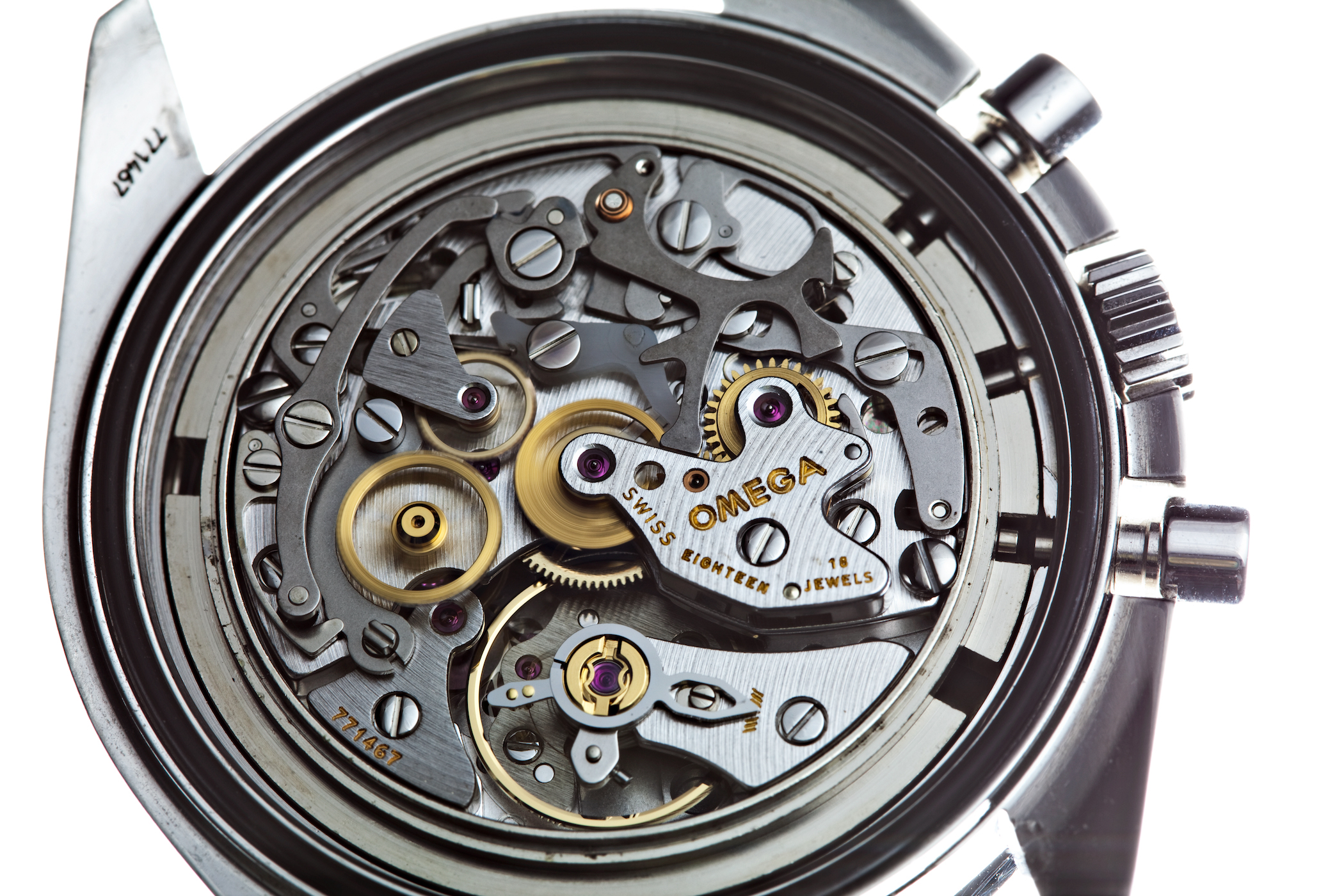
The Calibre 1861 is a cam-operated chronograph (Lemania-based) with a horizontal clutch, a synthetic Delrin brake, 18 jewels and a standard Swiss lever escapement. These two models are not chronometer-certified. It runs at 3Hz and boasts about 48 hours of power reserve. A solid, reliable engine that is pleasant to use and to wind, easy to service and that has some great historical background.
Bracelet
While both watches here are shot on leather straps, it must be said that they both were delivered with a stainless steel bracelet. The Speedmaster Moonwatch ref. 3750.50 presented here is originally equipped with a brushed band with polished inter-links – reference 1998/849. Measuring 20mm at the lugs and 18mm at the buckle, it was equipped with a rounded brushed clasp (with safety pushers) and engraved with the same mentions as found at 12 o’clock on the dial (logo, brand, Speedmaster, Professional). On later models, the adjustment pins were replaced by screws. And even though of impeccable execution and comfort, its design started to look slightly outdated and this explains why Omega redesigned it in the latest generation Moonwatch.
As for the Speedmaster 60th anniversary, Omega delivered the watch with a brushed and polished flat-link bracelet that tried to mimic the look and feel of the original bracelets found on the CK2915. Once again of an impeccable execution, with adjustment screws and micro-adjustment clasp, the result is visually less convincing in my books. Too thick, too wide at the buckle, too heavy, too modern in its execution, it doesn’t bring the desired vintage feel to this watch. However, the Speedmaster 60th anniversary was delivered new with two additional straps; the brown leather strap you see here and a grey NATO strap. Here, the Speedmaster Moonwatch Calibre 321 does a better job with its thin steel bracelet.
Look and feel
Basically, everything we said above is easily felt once on the wrist. No doubt, both are great representants of the Speedmaster family and are immediately recognizable as such. However, passed the initial look, they are drastically different.
As you can see here photographed on my 16.5cm wrist, the two watches wear practically identical, despite an almost 3.5mm difference in diameter. The lug to lug being the same, this results in a 60th anniversary edition that feels larger than what the numbers suggest. The difference in height is almost impossible to notice and comfort is equal. Light and versatile, both can be worn at the city or even with a suit.
One thing that changes a bit the perception on the wrist is the different position of the strap, which sits low on the 60th-anniversary edition and high on the Moonwatch, due to a more pronounced curvature of the lugs on the vintage-oriented model. This helps to have a watch that feels a bit more compact, but this is really marginal.
What really matters here are the aesthetics. The 60th anniversary watch has a completely different charm, and if it can’t beat the real patina of a late 1950s CK2915, it remains a watch that is far warmer, more “decorated” and less instrumental than the toolish Moonwatch. And admittedly, the Professional does a better job in terms of daily usability, since legibility and the way reflections are avoided are simply superior. This is why these watches are complementary, and not direct competitors. One is a must-have in all collections, the other is destined to more seasoned collectors with a strong passion for the Speedmaster itself.
The market
What we have here are two great Speedmasters to consider on the second-hand market. Indeed, if you want a proper vintage-inspired model, you’ll have to look at the Calibre 321, which means waiting list and EUR 13,900. Still, it is according to us here the ultimate Speedmaster now available. If you want a new Moonwatch Professional, you’ll have to look for the new Master Chronometer models here, with a starting price of EUR 5,900.
In the case of the classic, previous generation Speedmaster Moonwatch, let’s say that finding one won’t be a problem. There are hundreds of watches offered, and a budget of EUR 4,000 will secure a full set example in mint condition. As for the Speedmaster 60th anniversary, it was released in a limited edition of 3,557 watches, so it isn’t an extremely rare model. Offered first at around EUR 7,000, you can still find almost new ones for sale just under retail price – but I’d expect the prices to slowly go up. It remains a nice opportunity to get your hands on one of the best vintage re-edition Speedmasters ever created.
Finally, if you’re into modern straight lugs Speedmasters, the FOiS, recently-discontinued, is also a model to consider if the 60th-anniversary model isn’t your thing and if you want a slightly more contemporary appraoch.


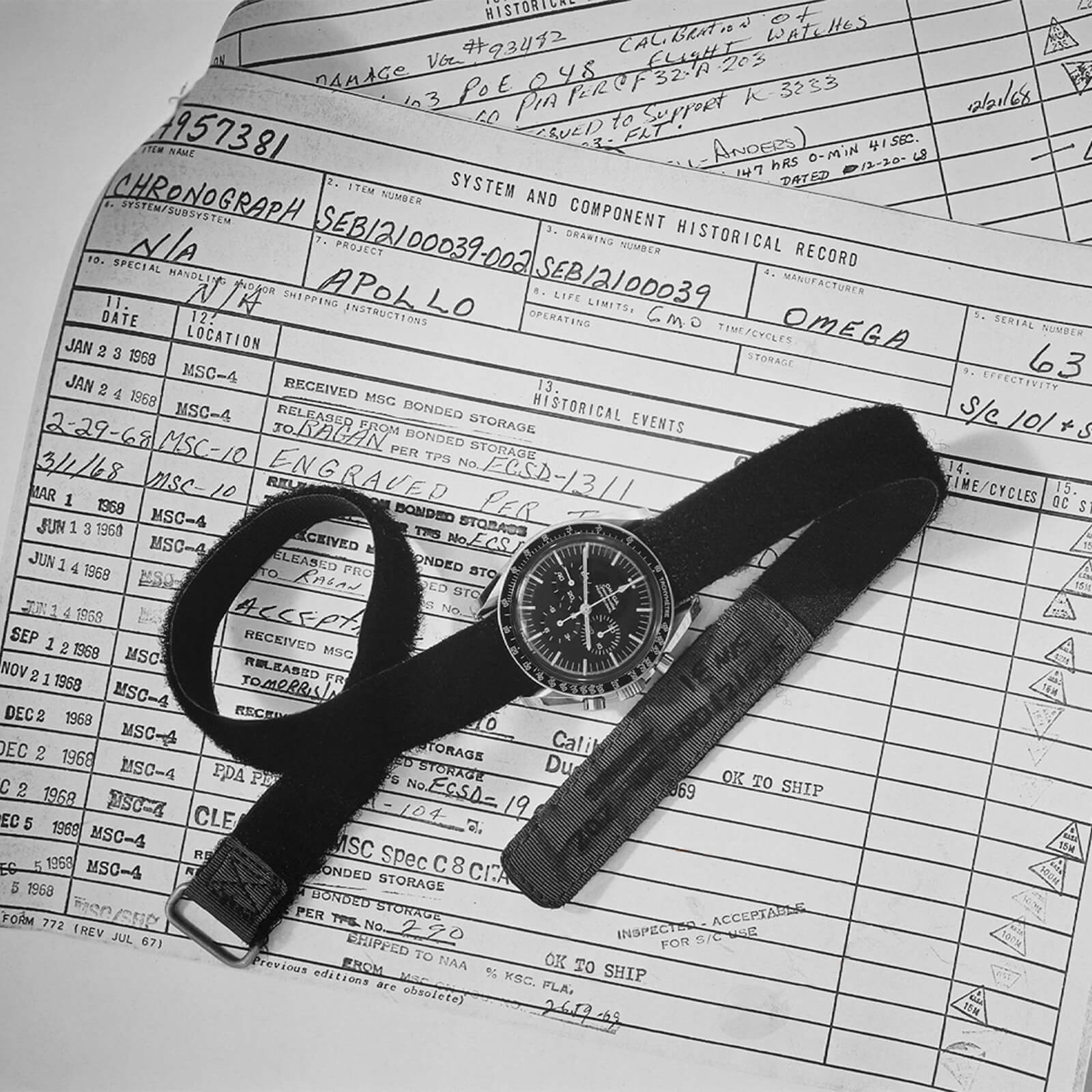

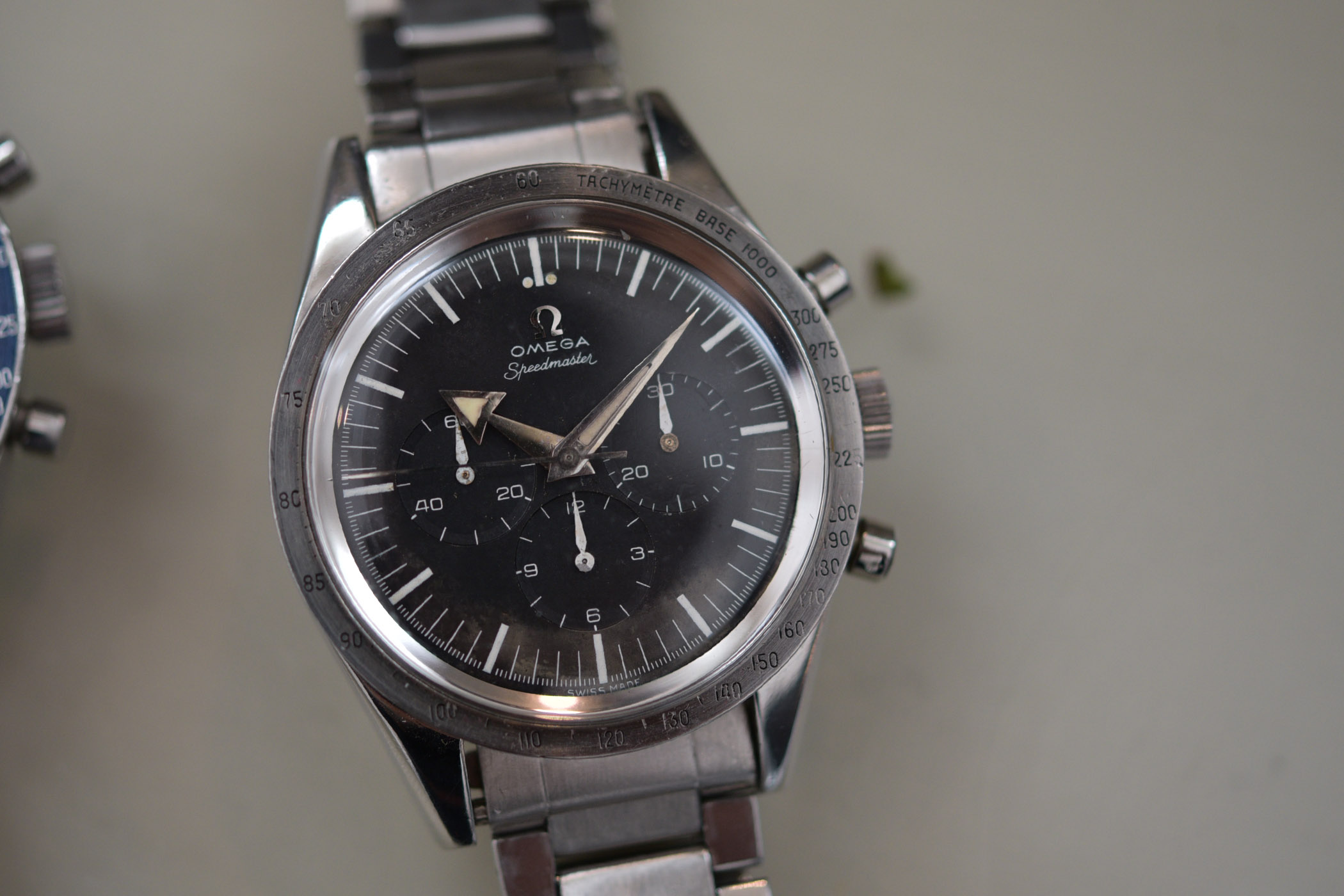
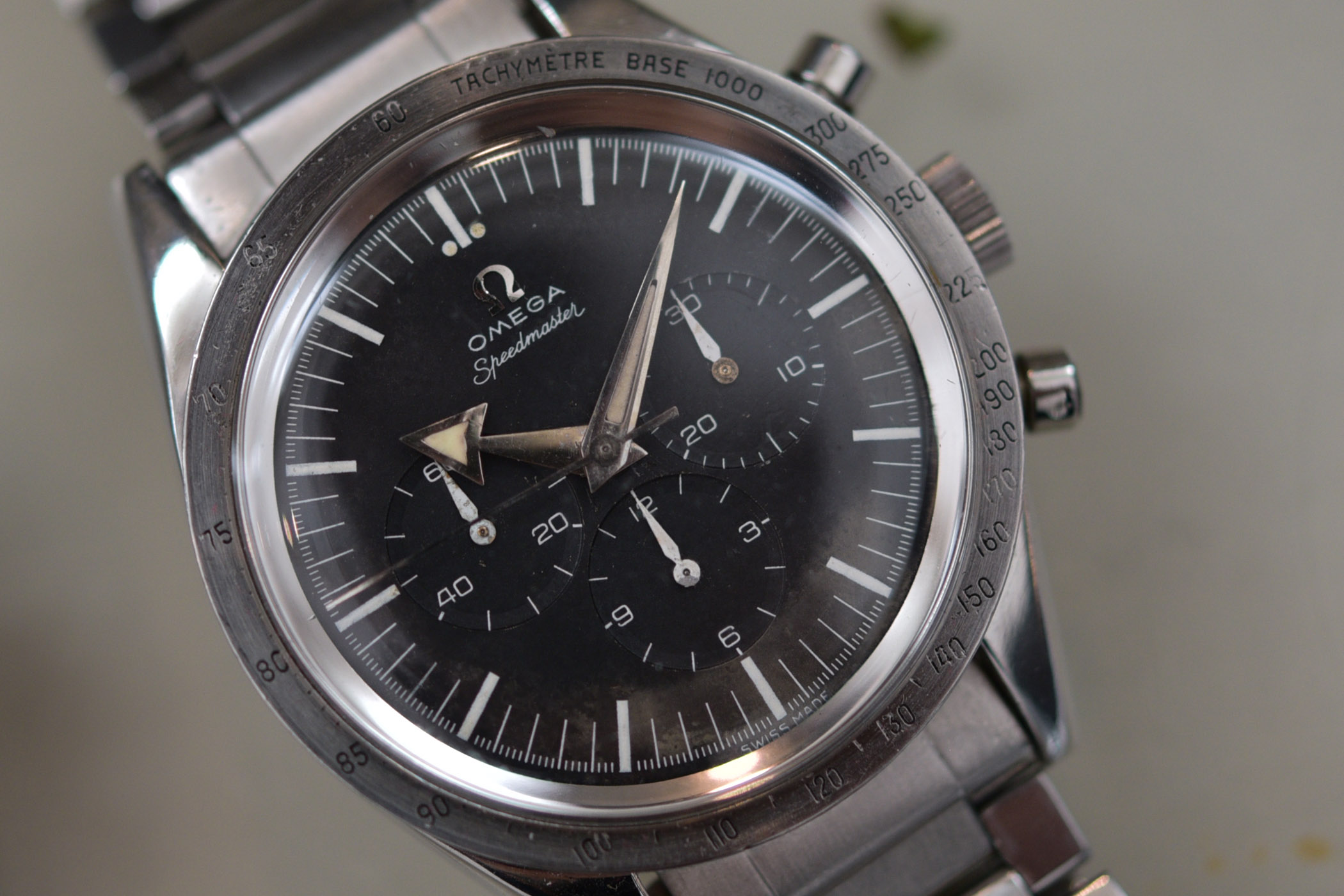
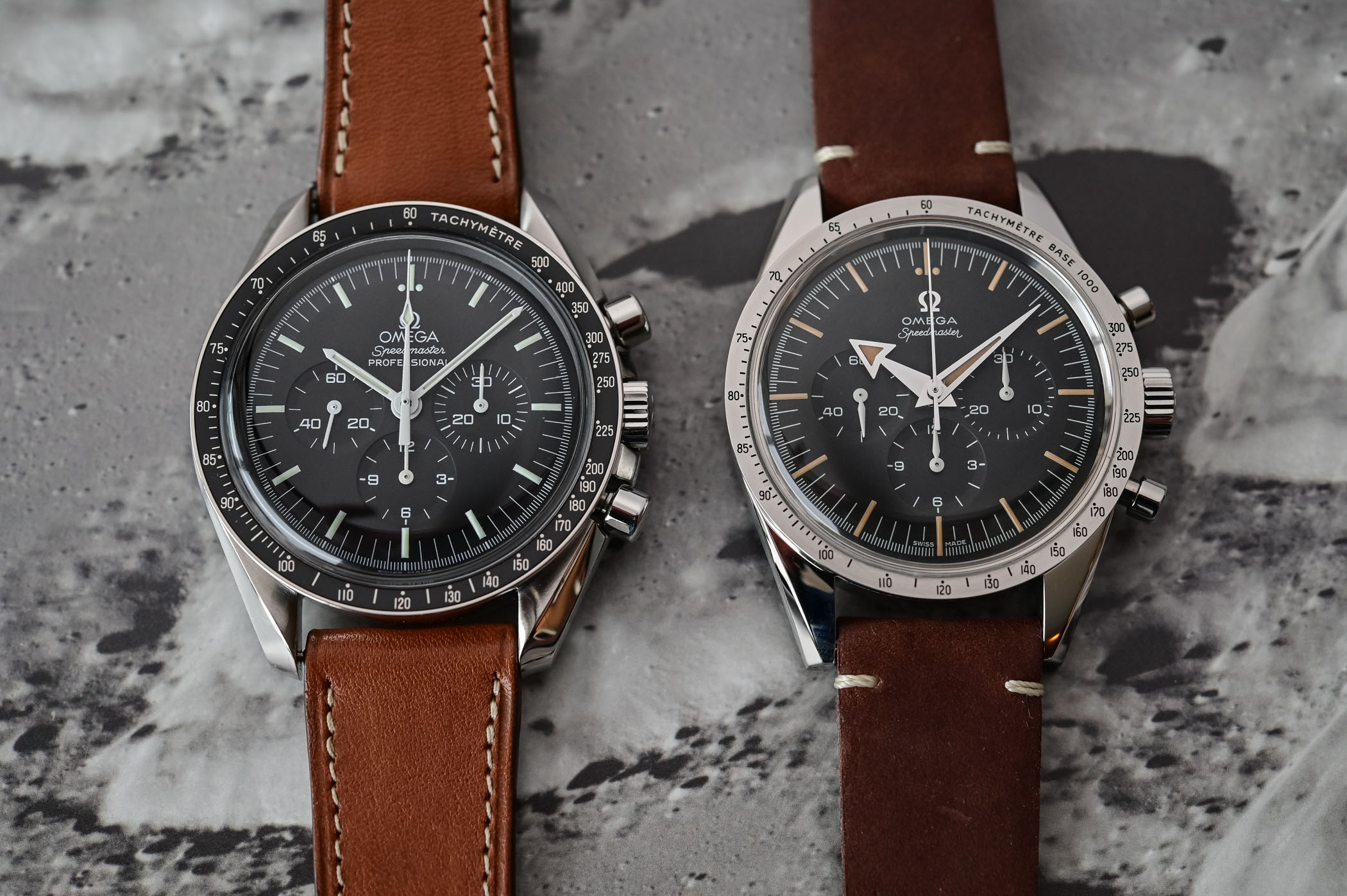

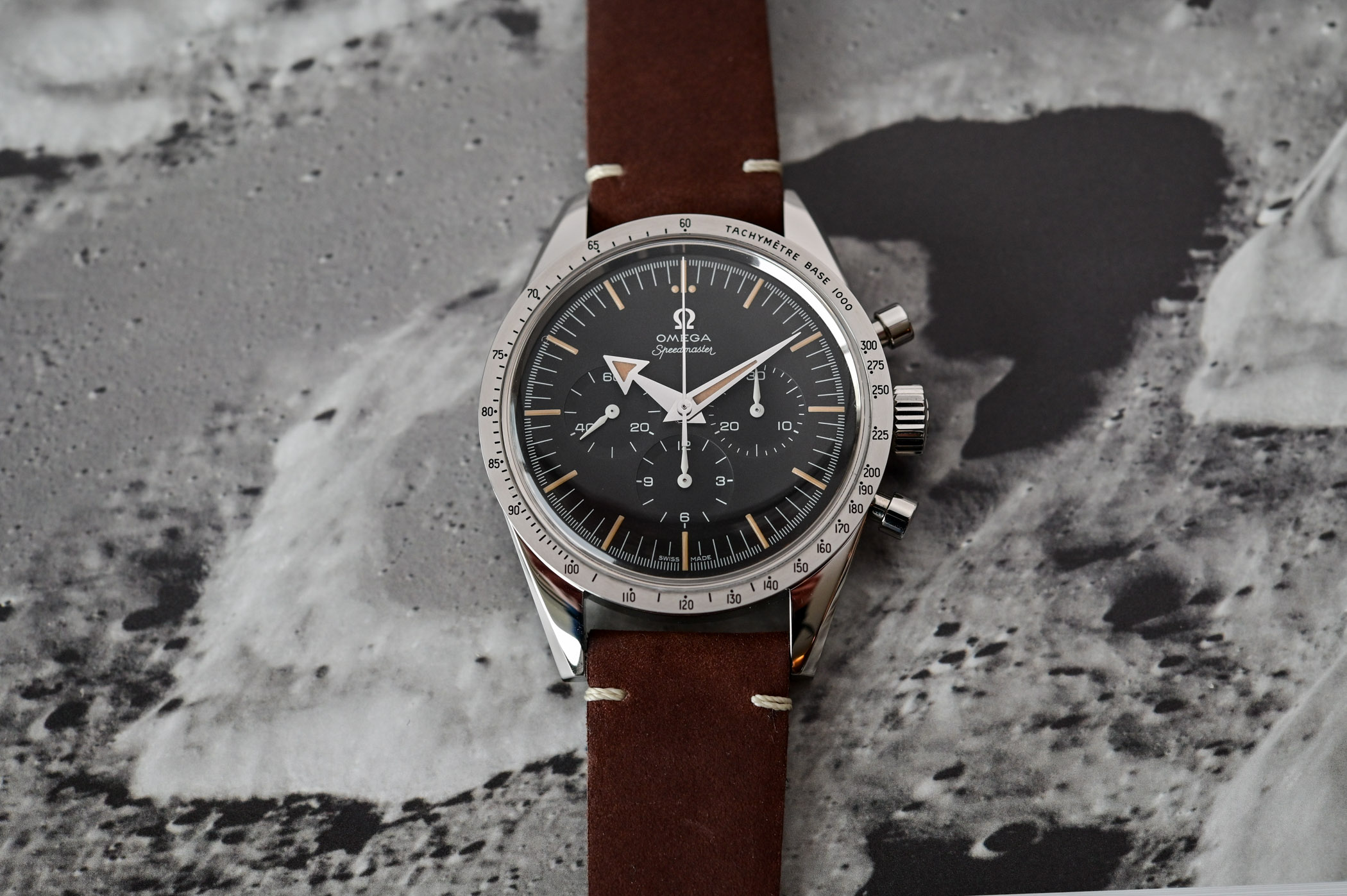

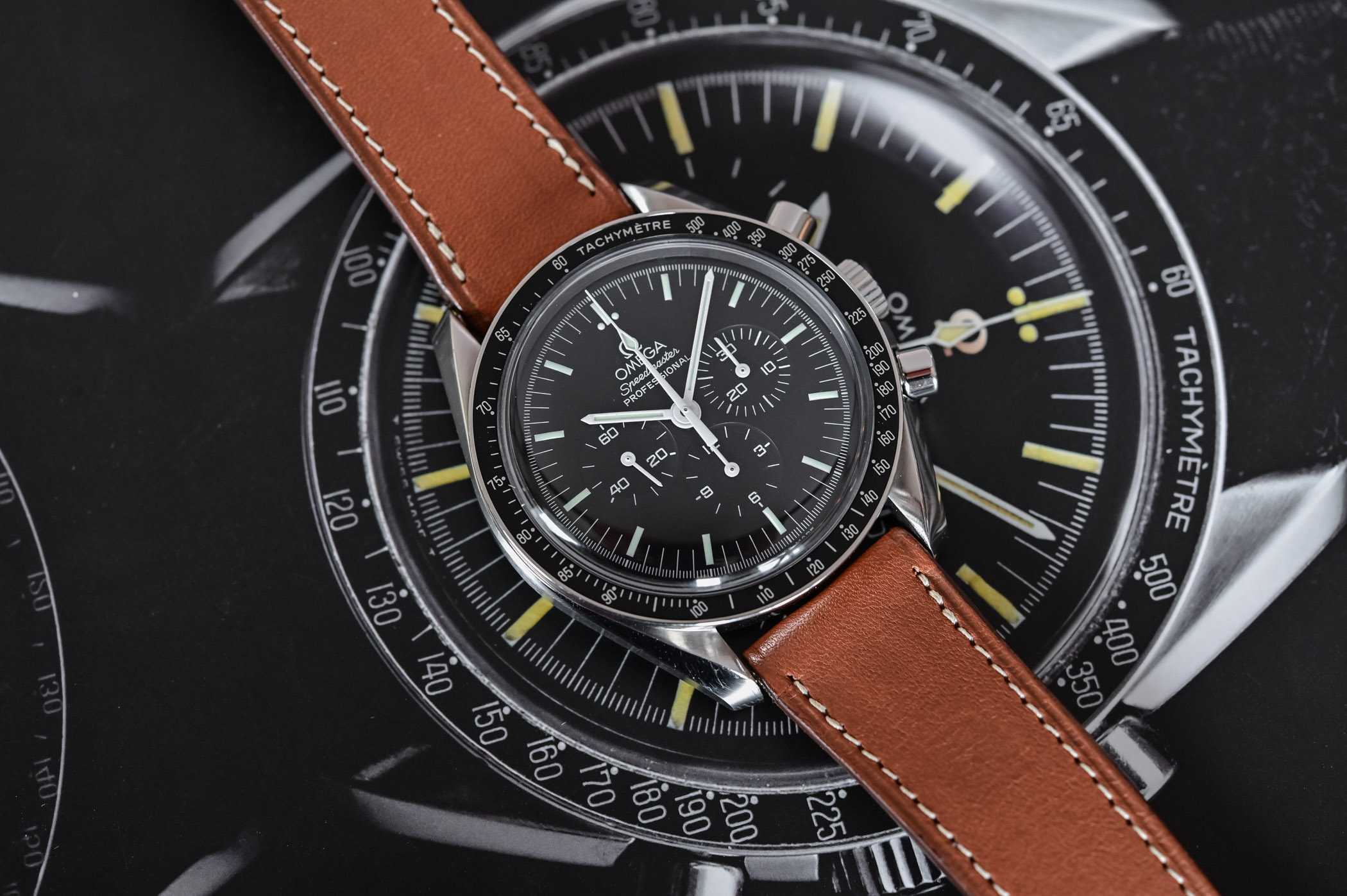

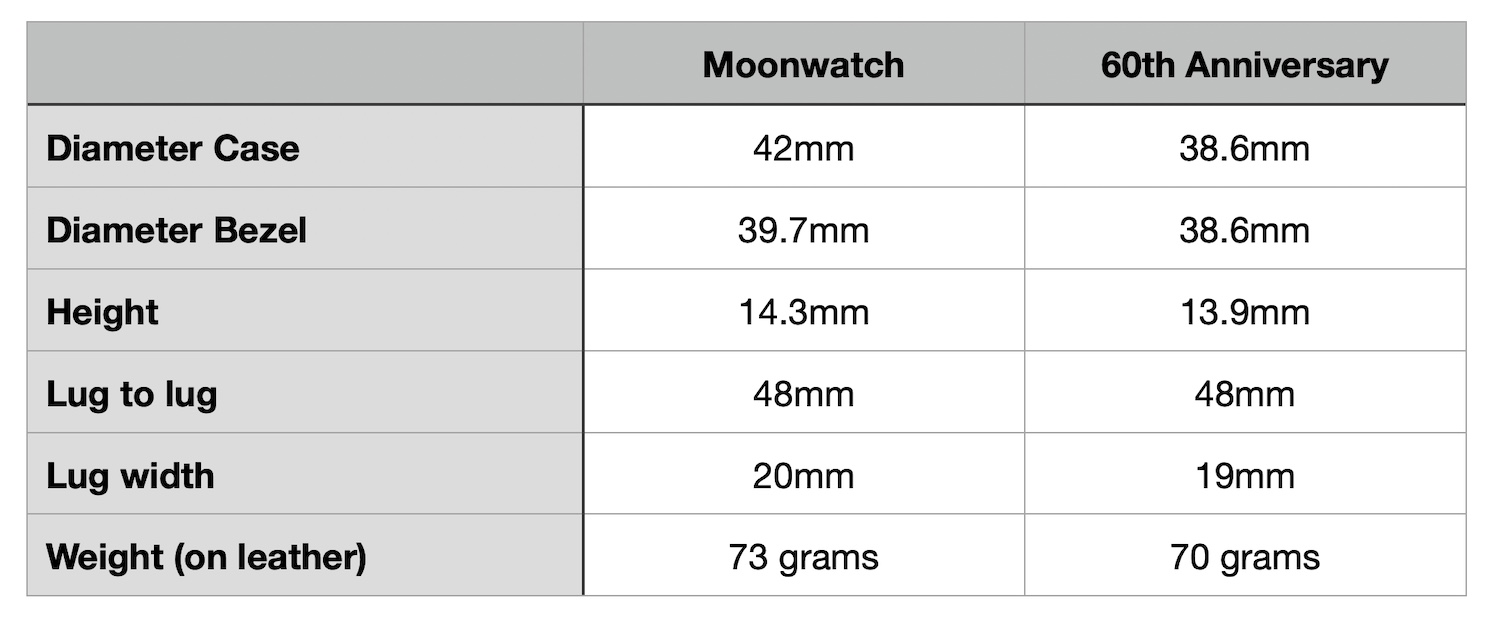
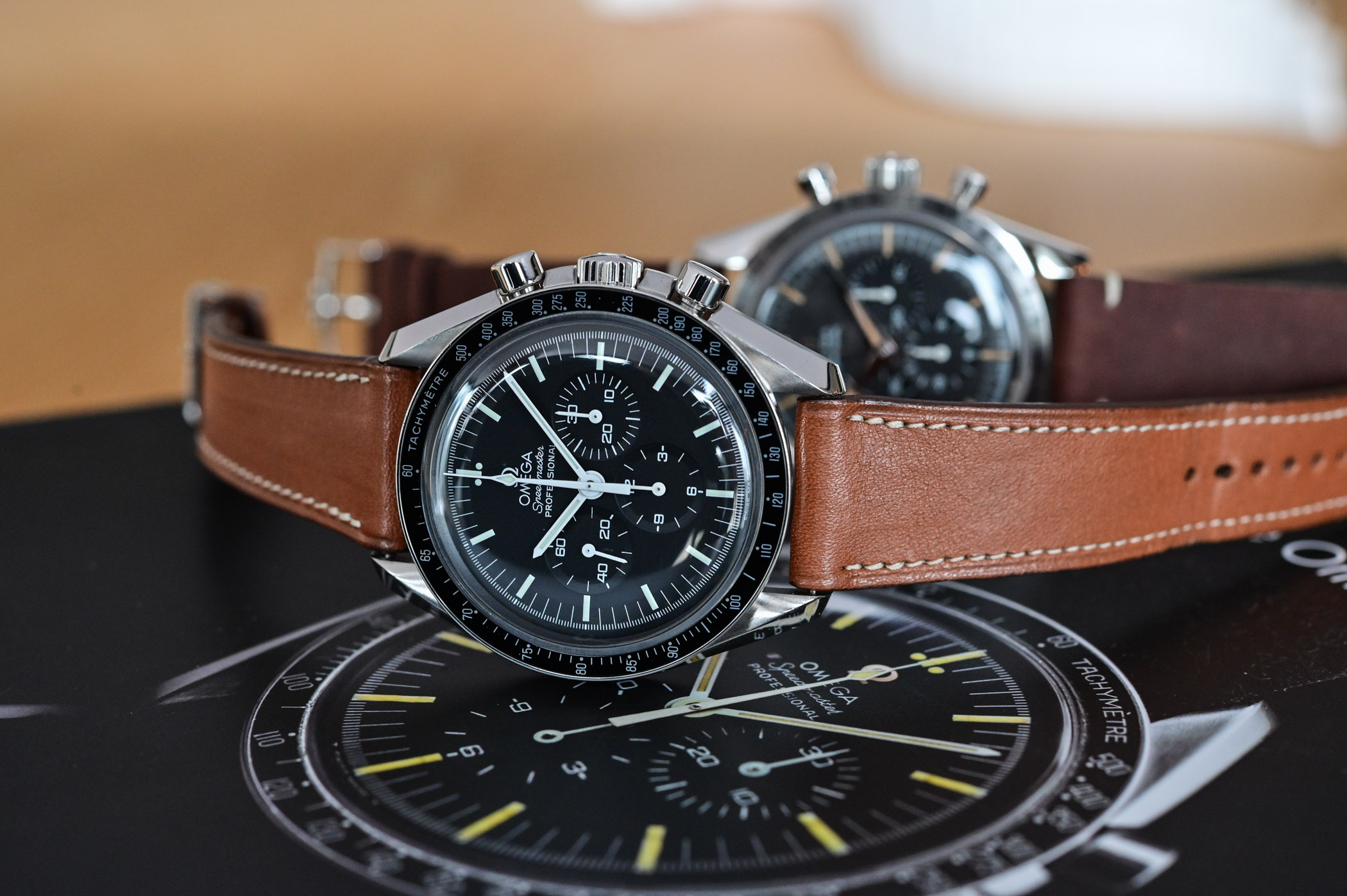
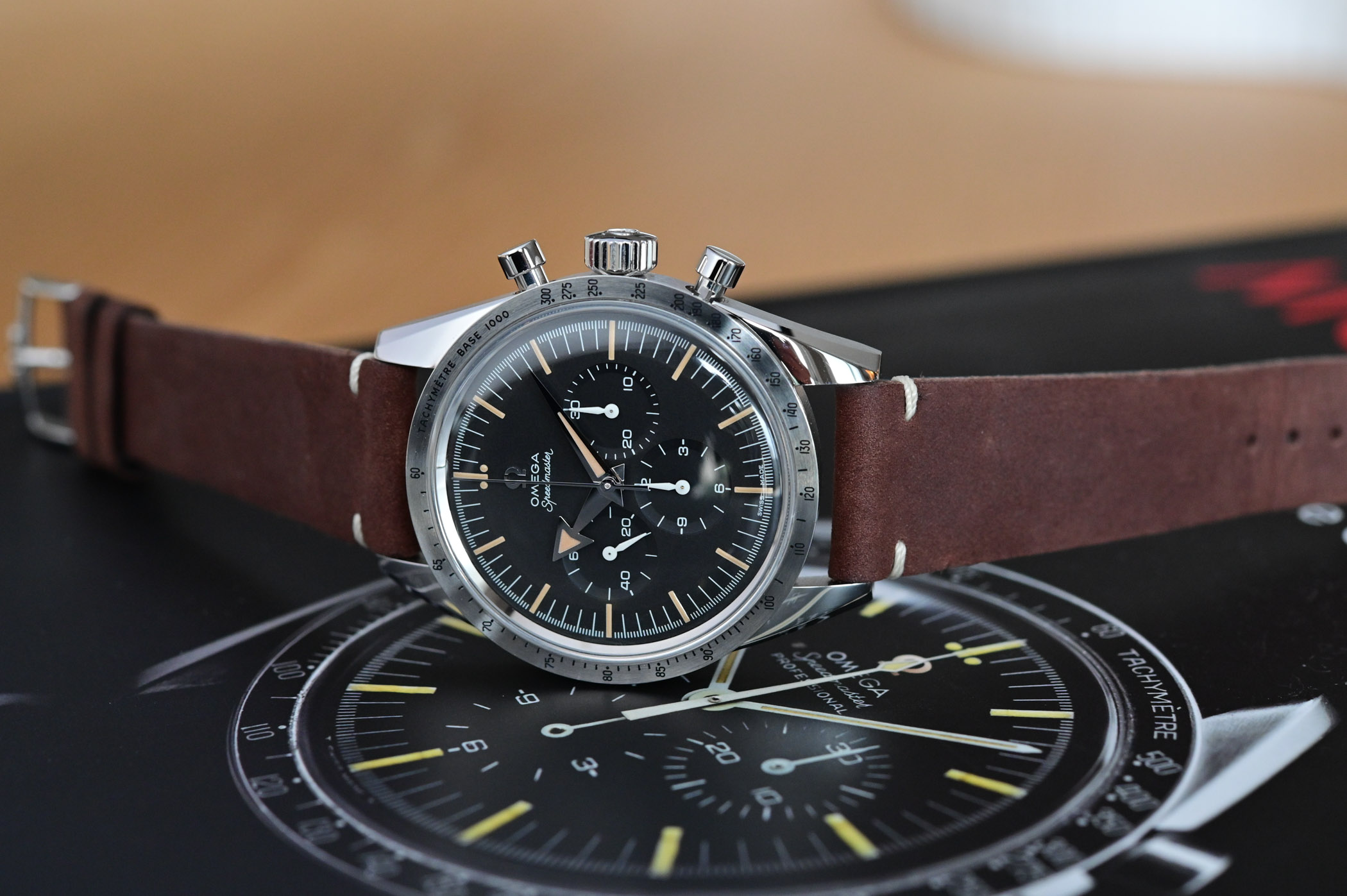
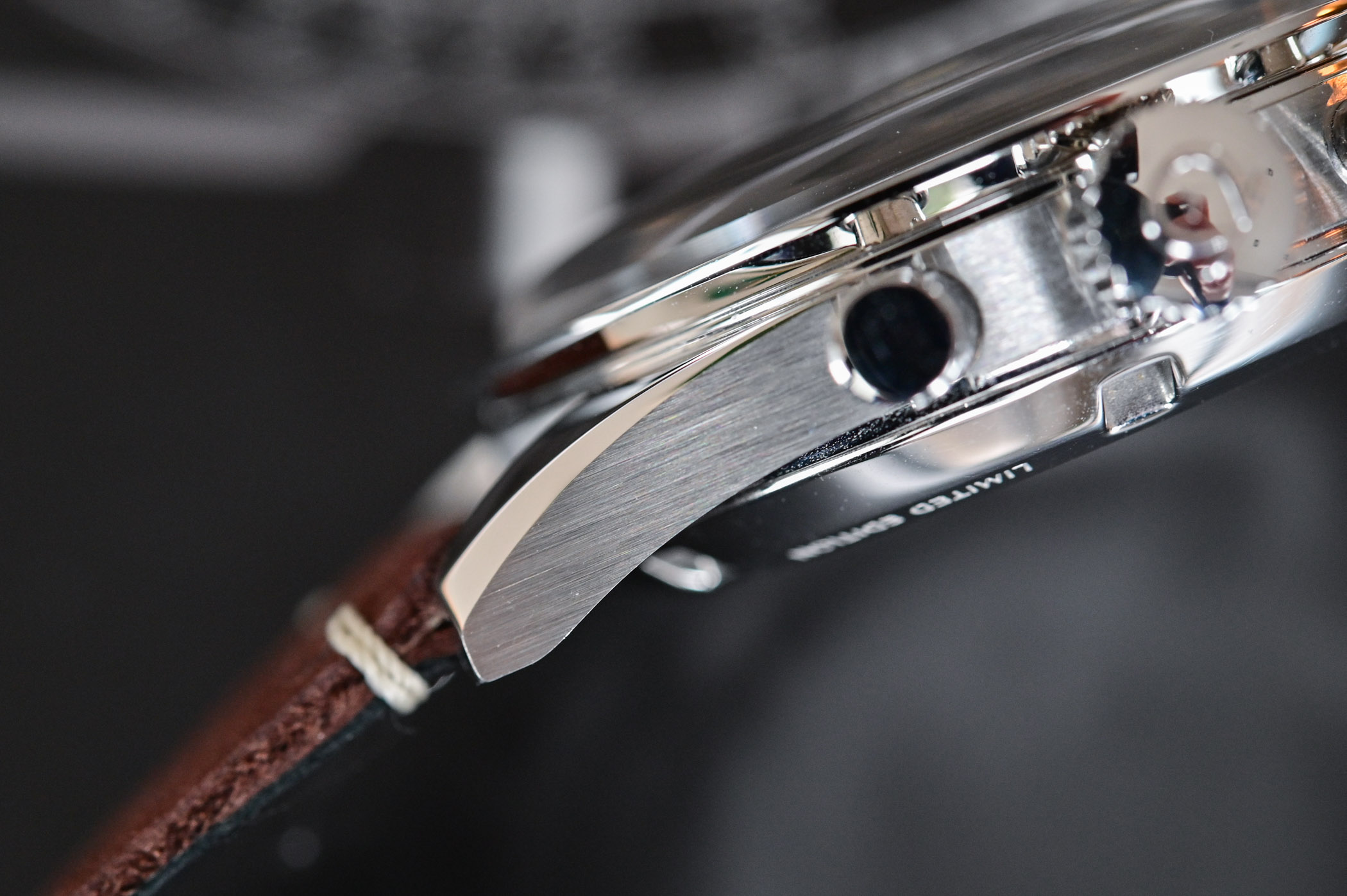
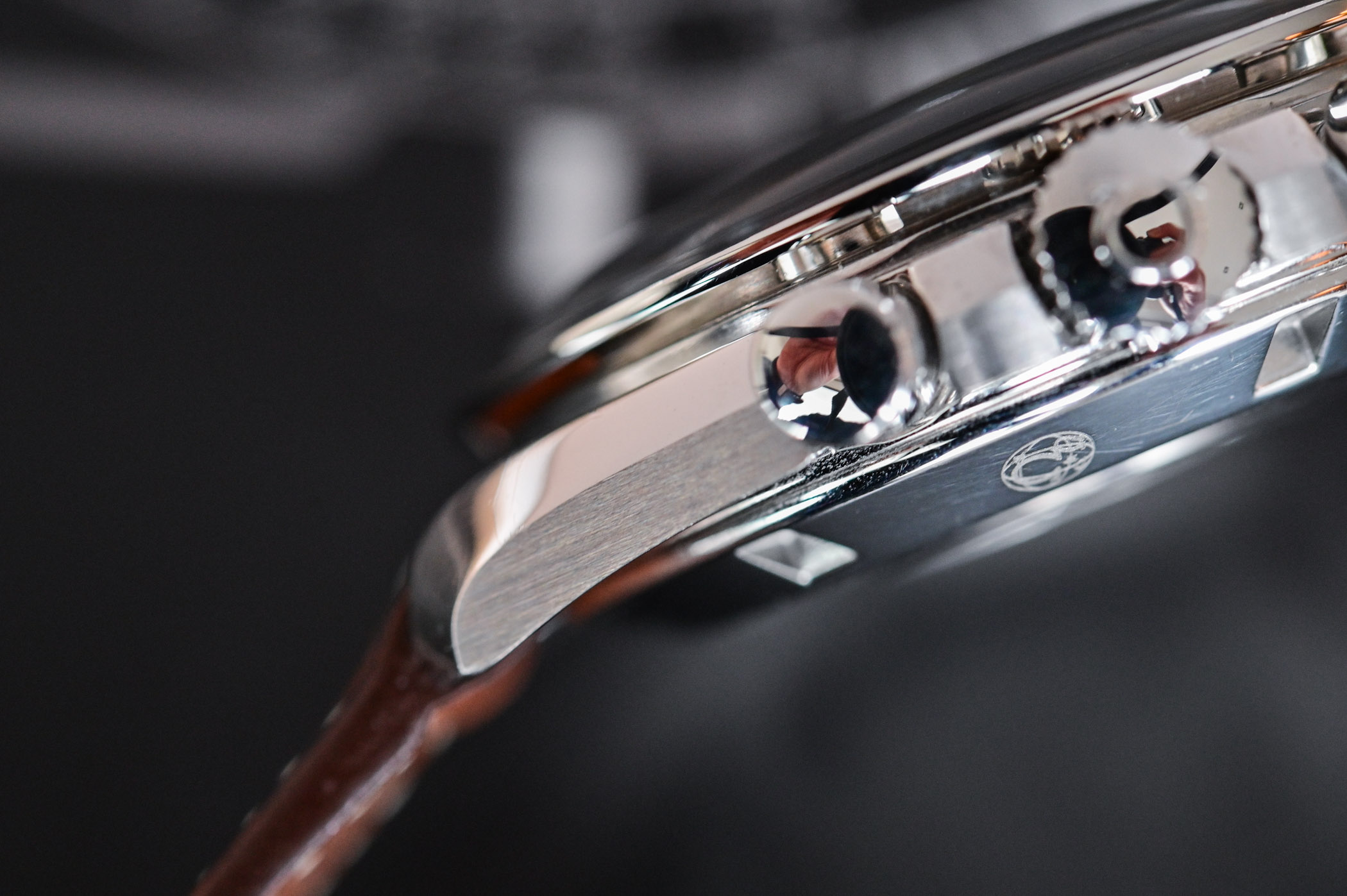

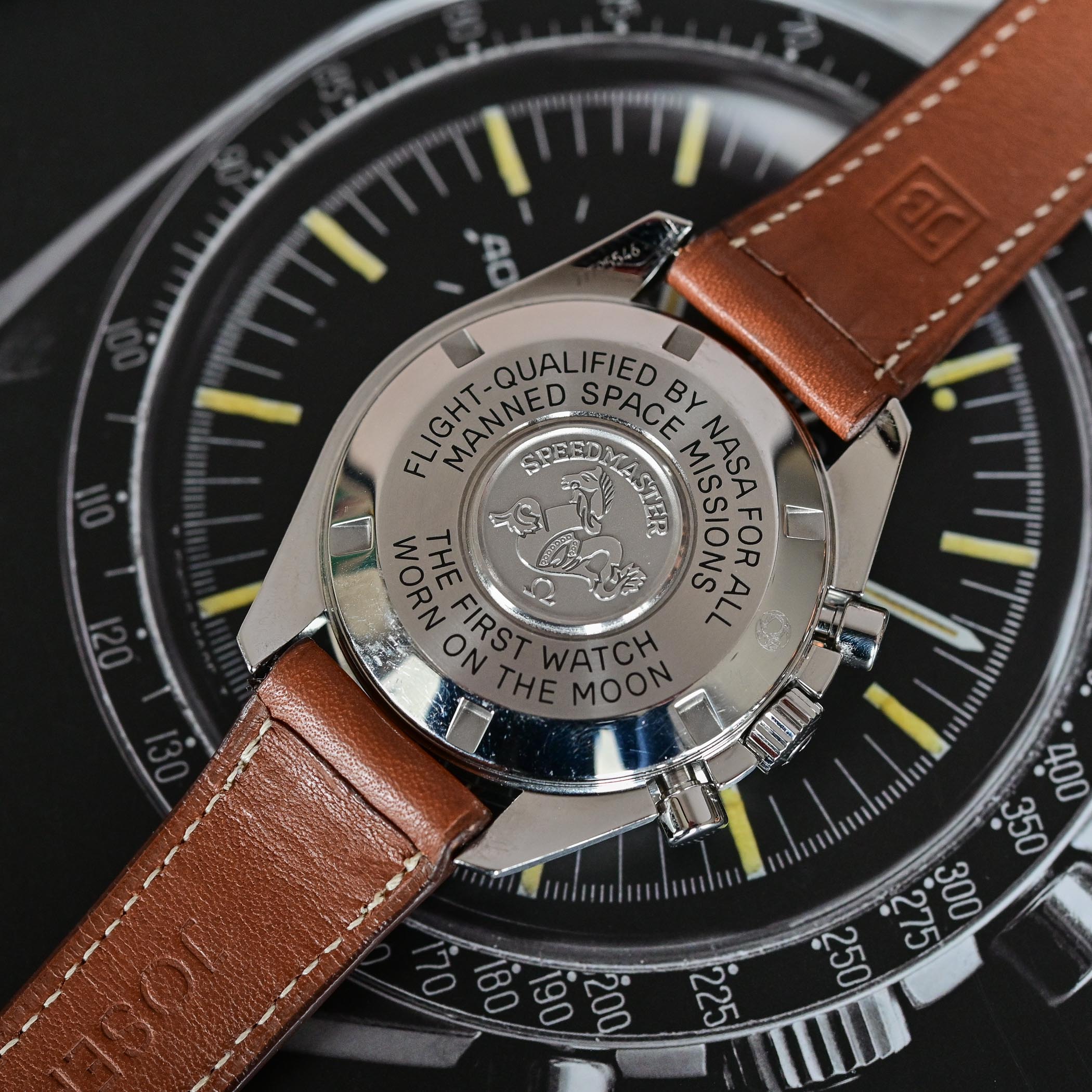
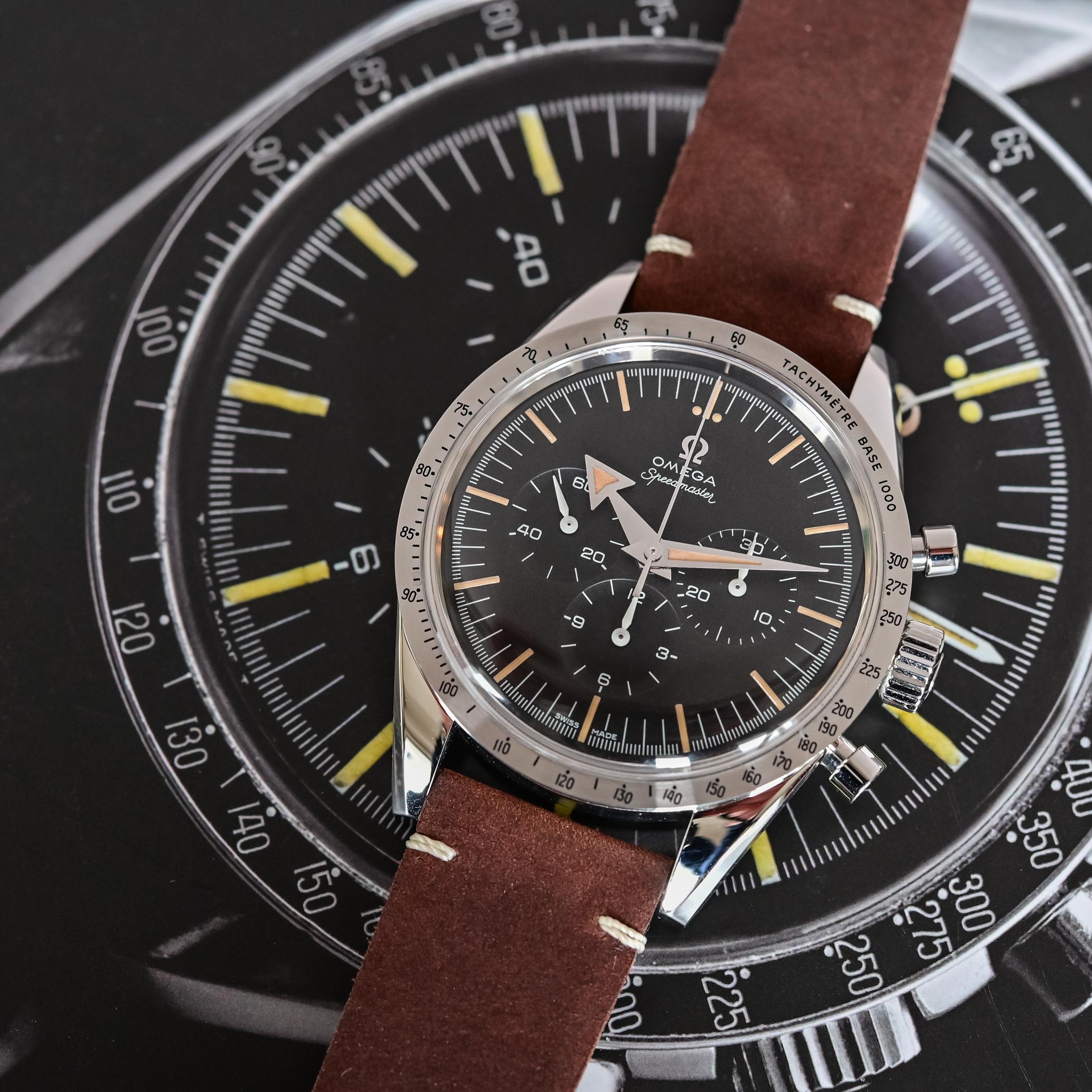
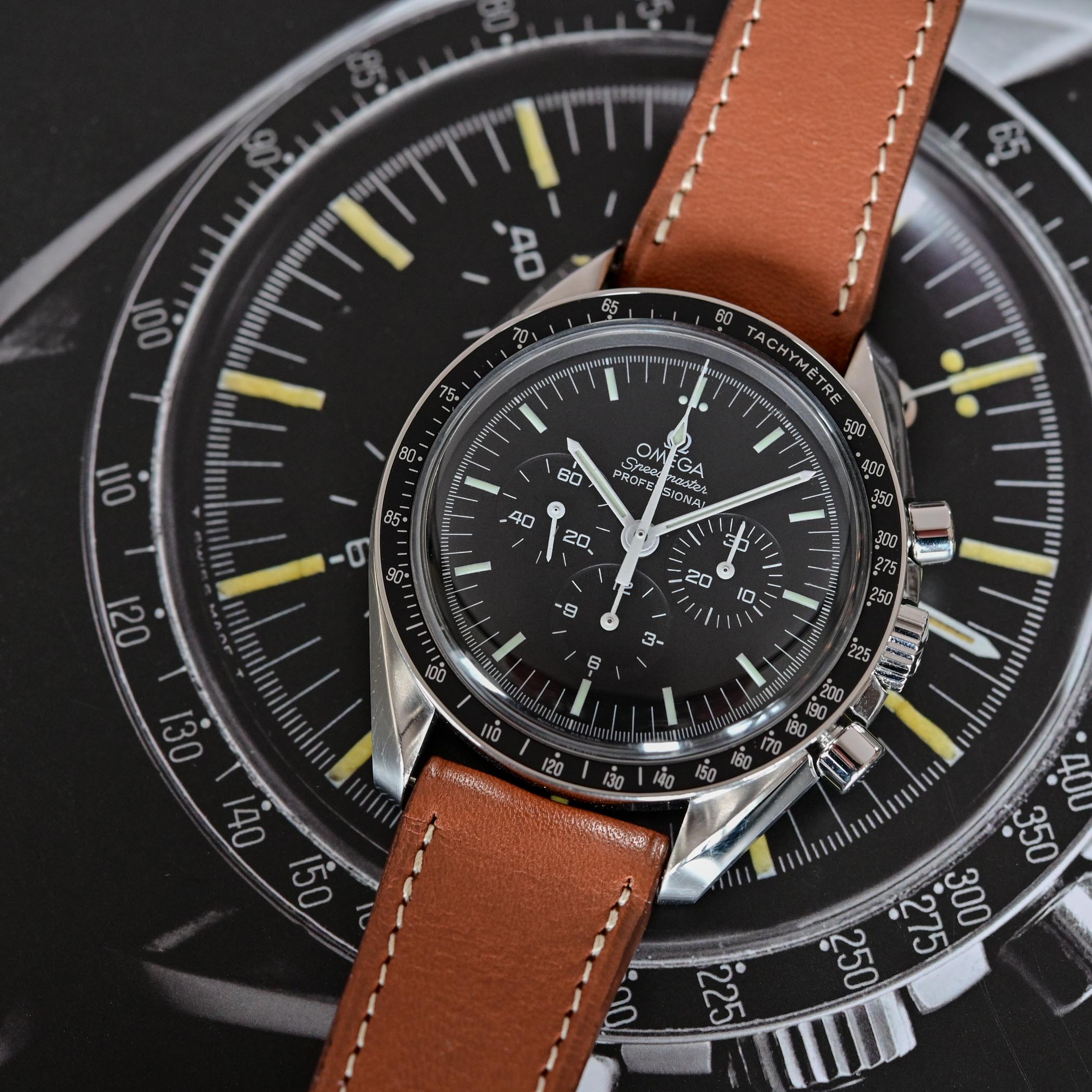
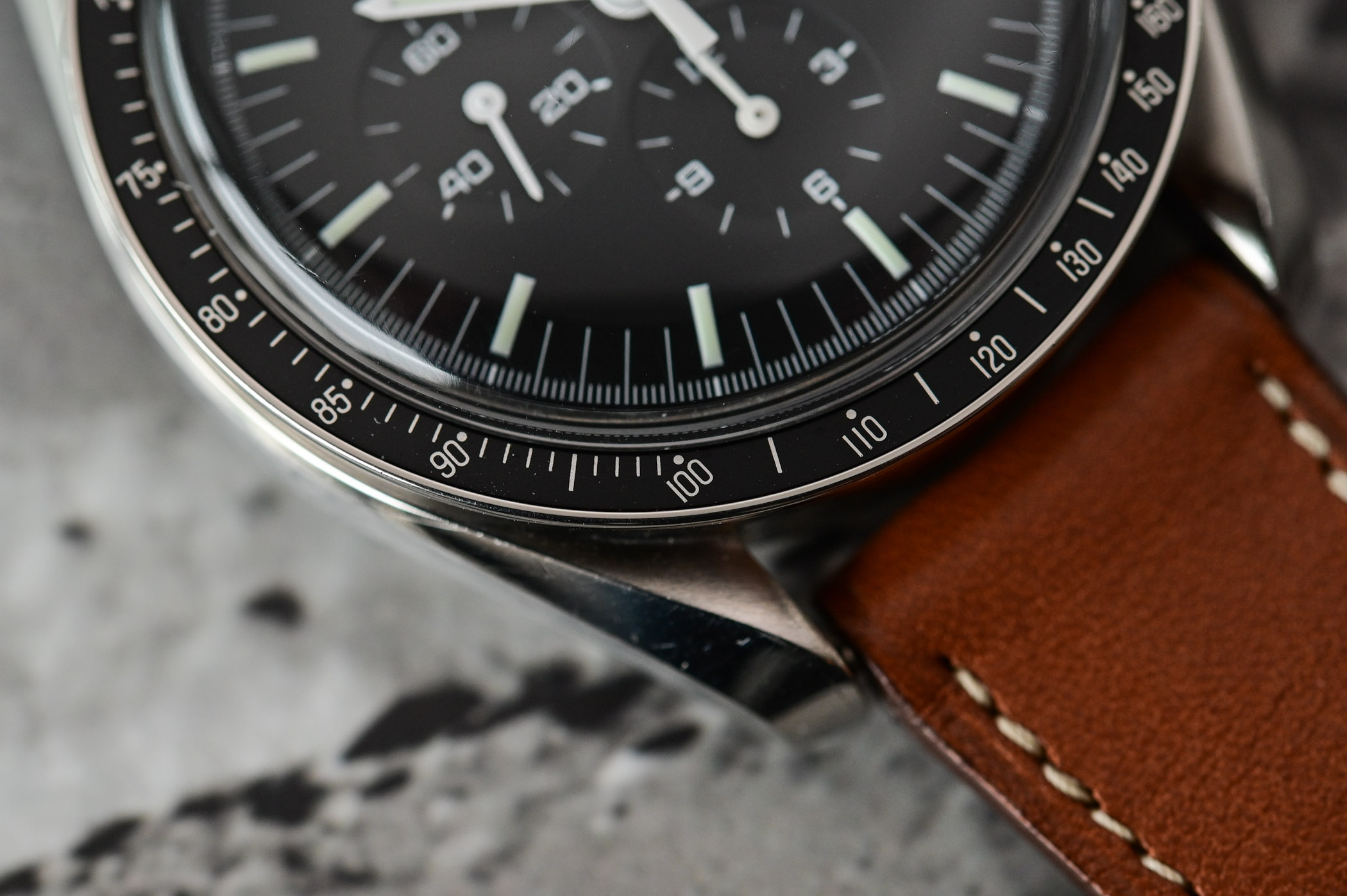
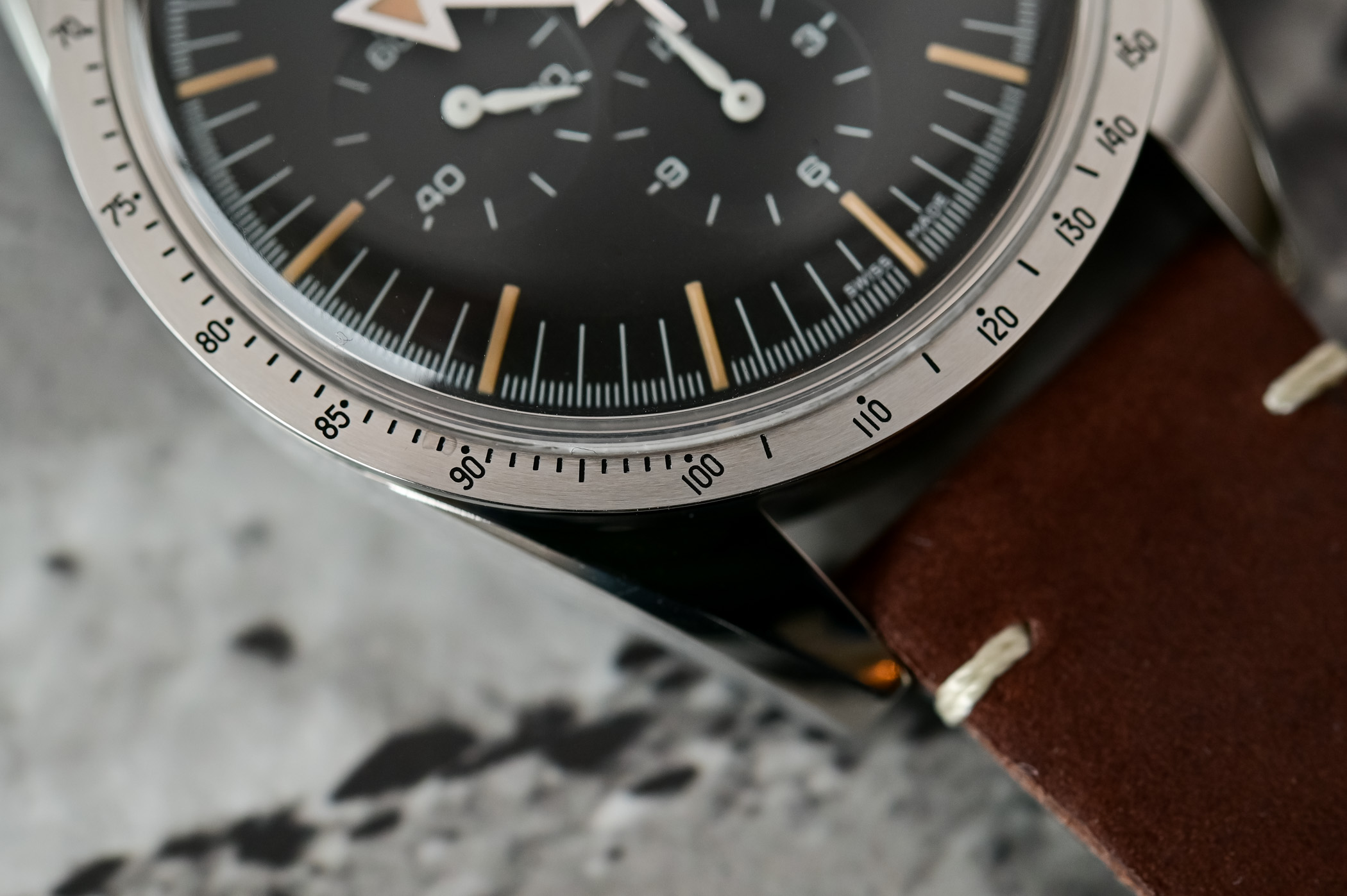

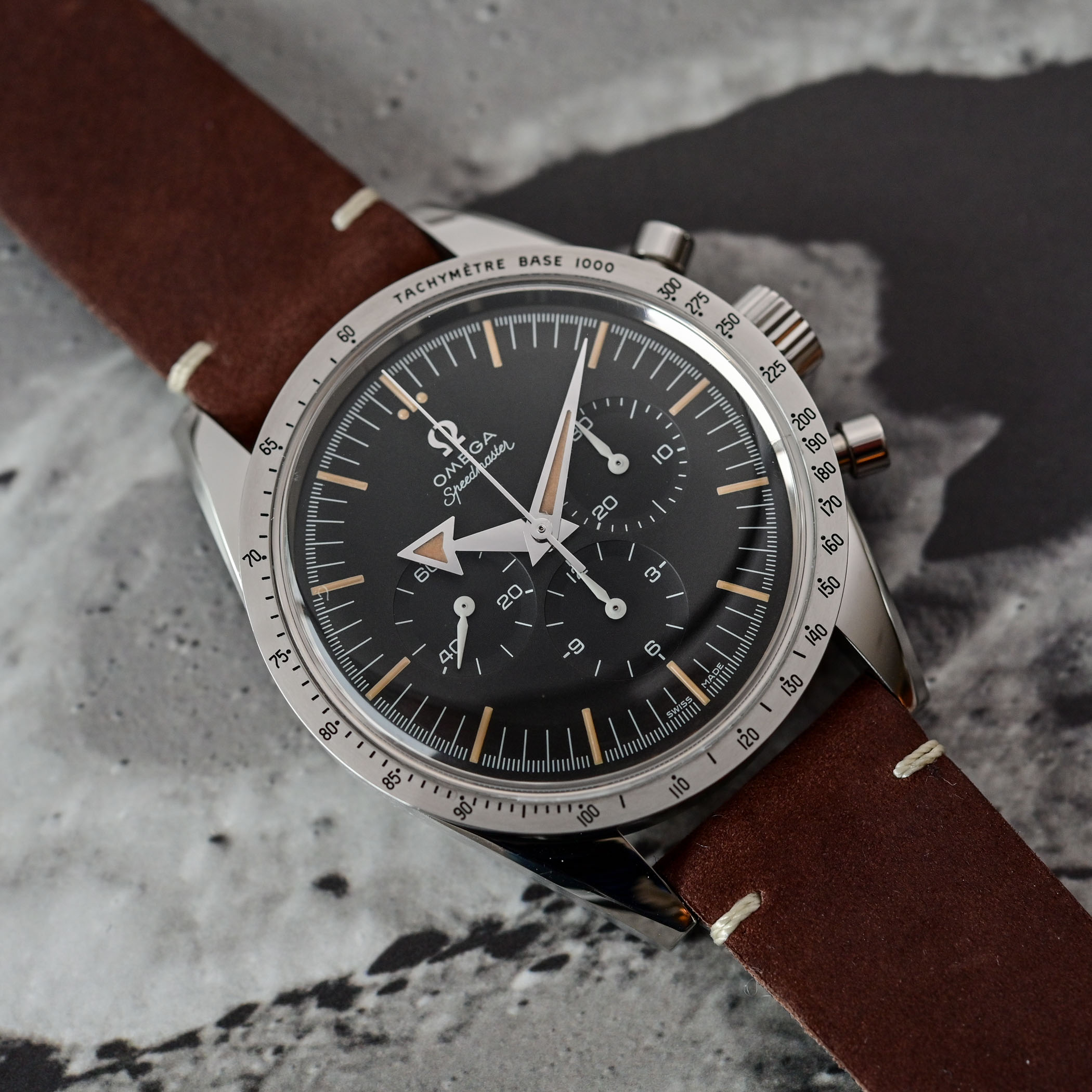
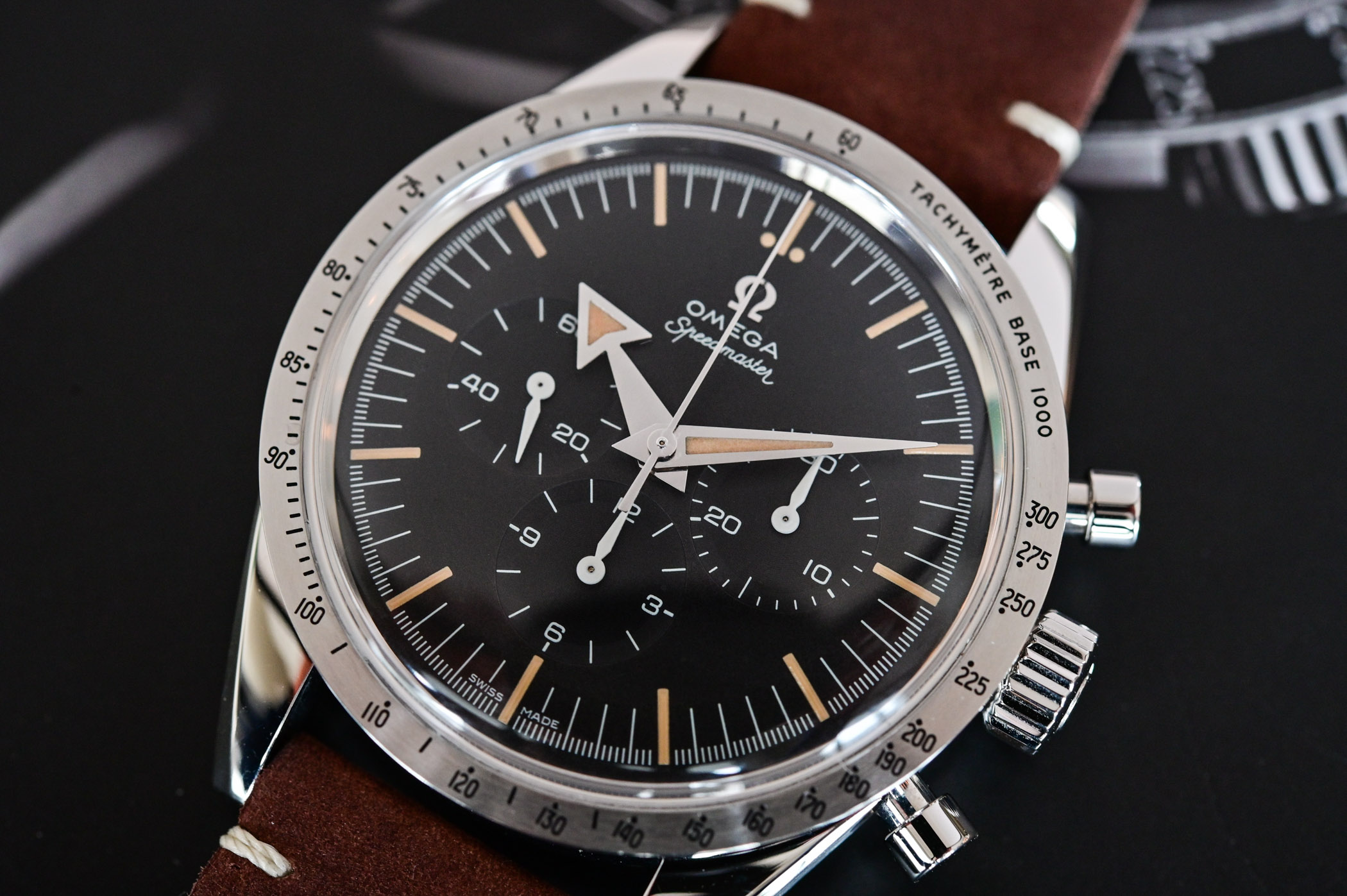
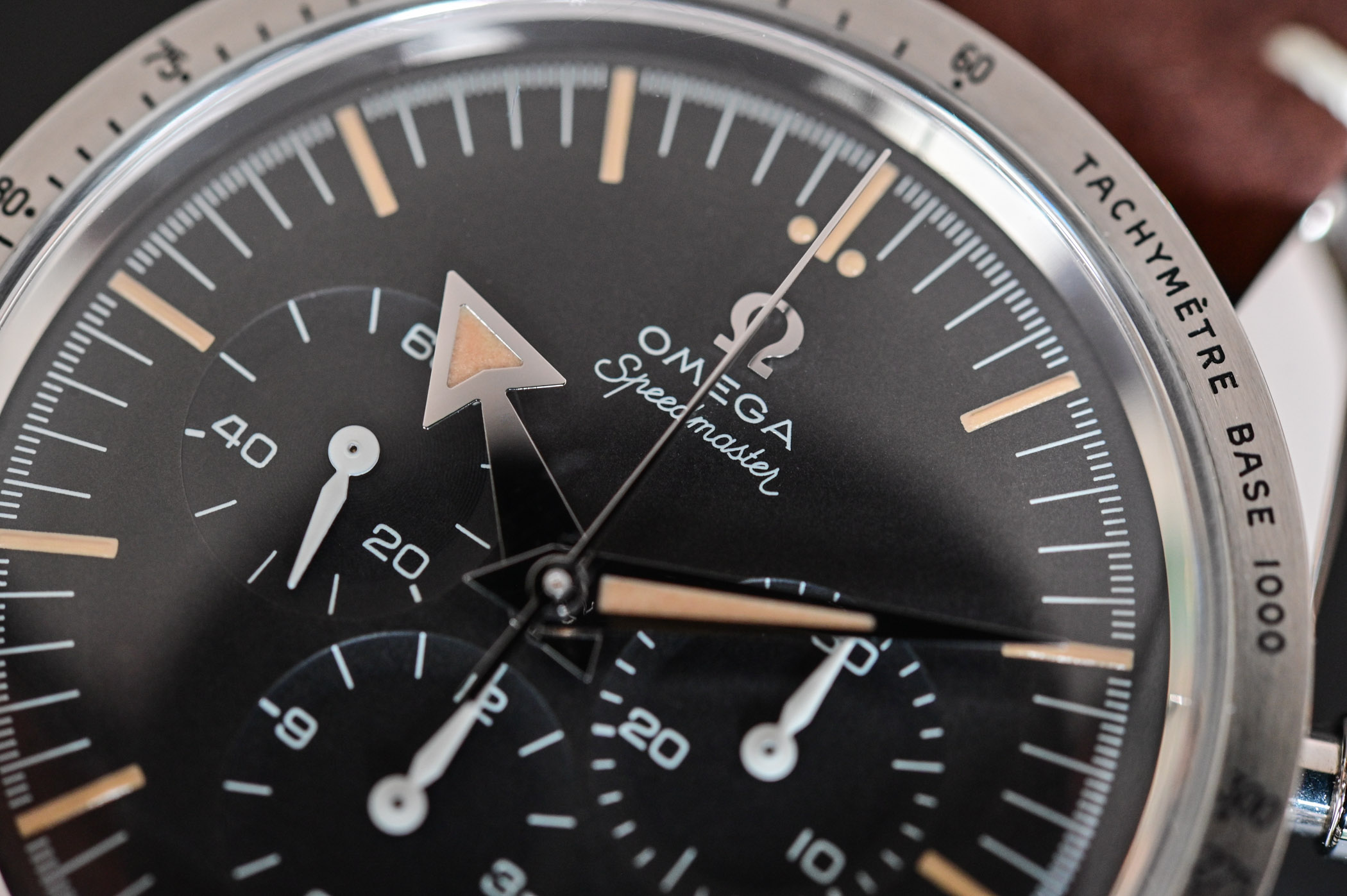
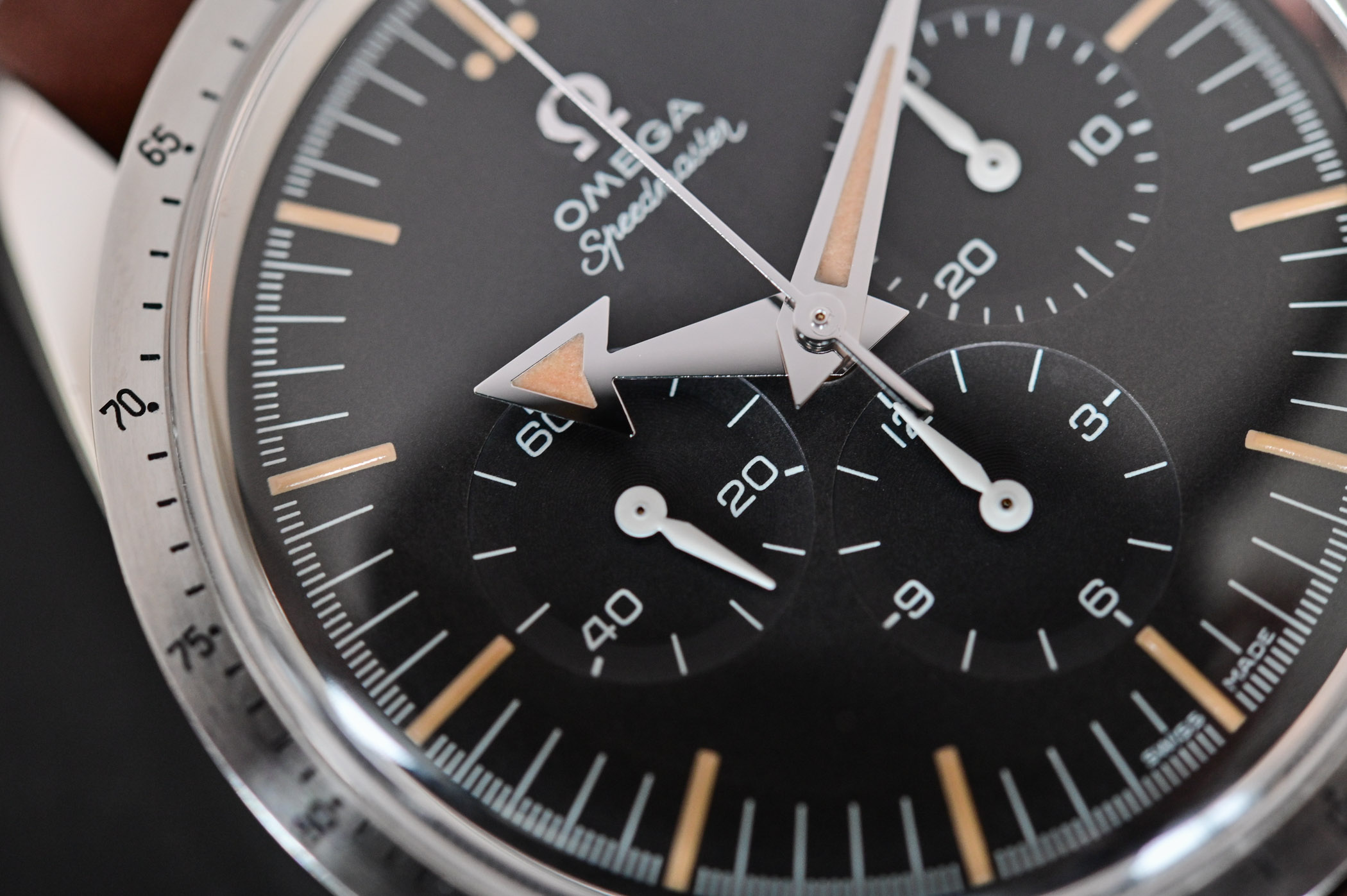
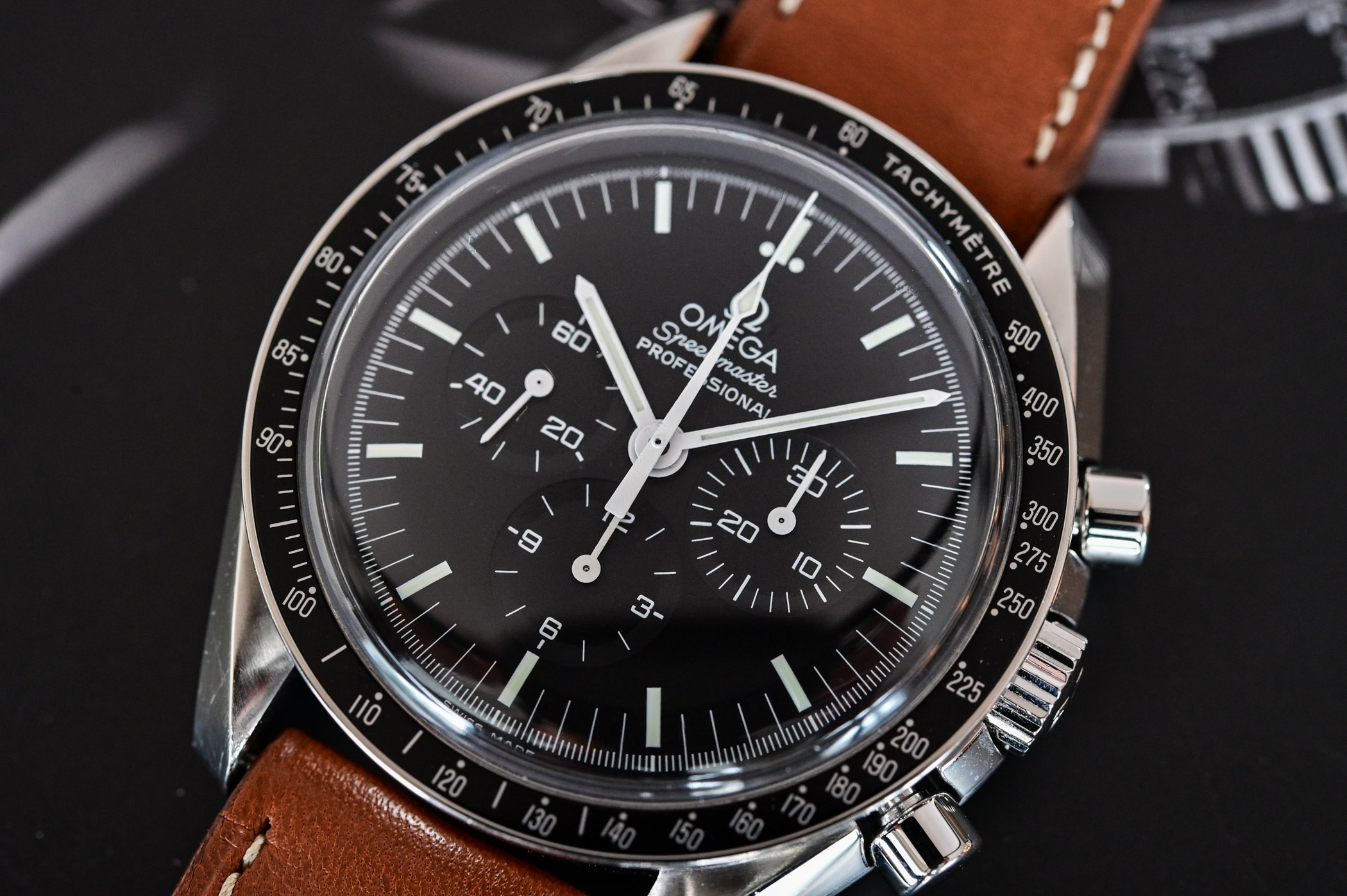
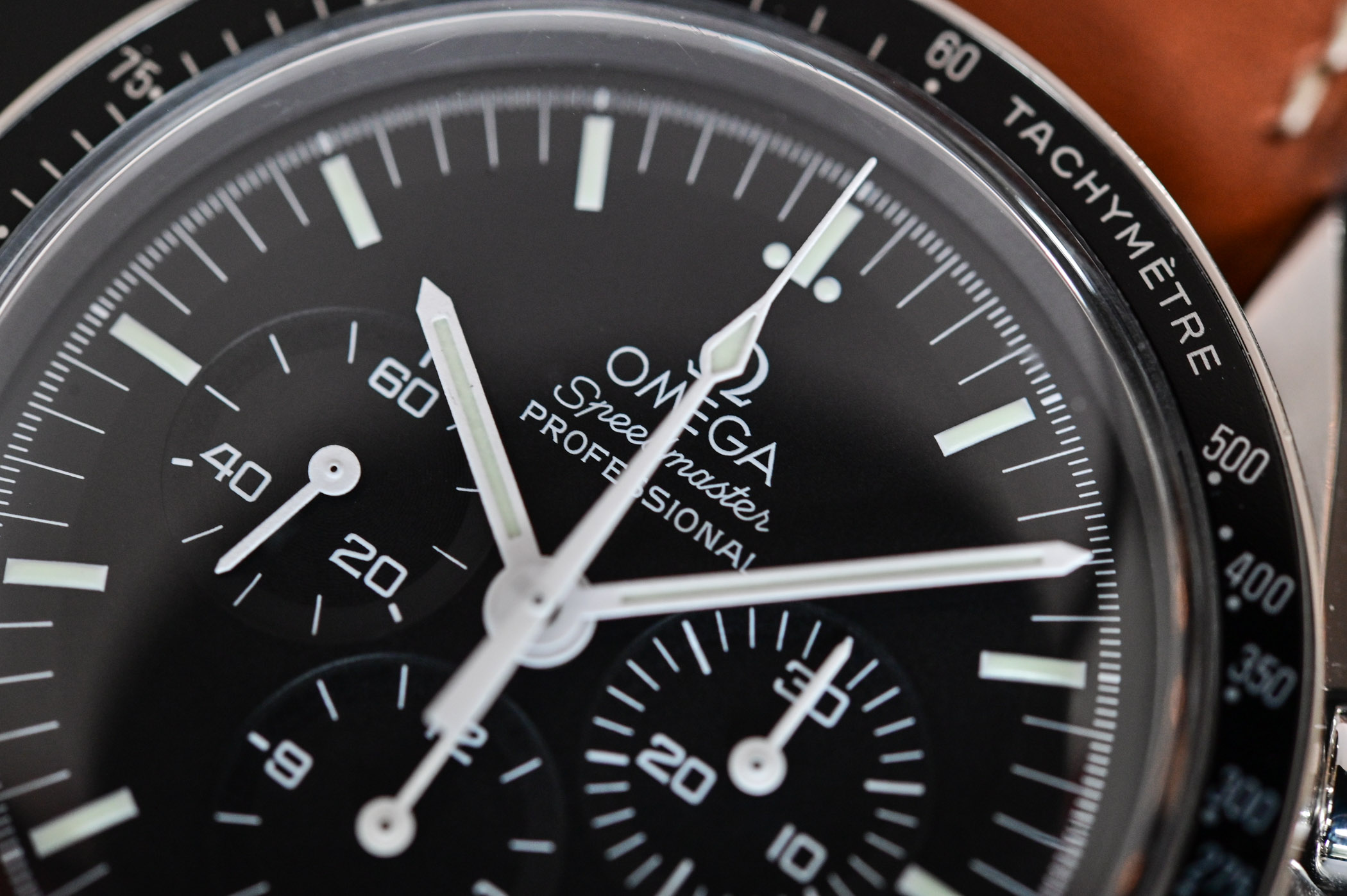


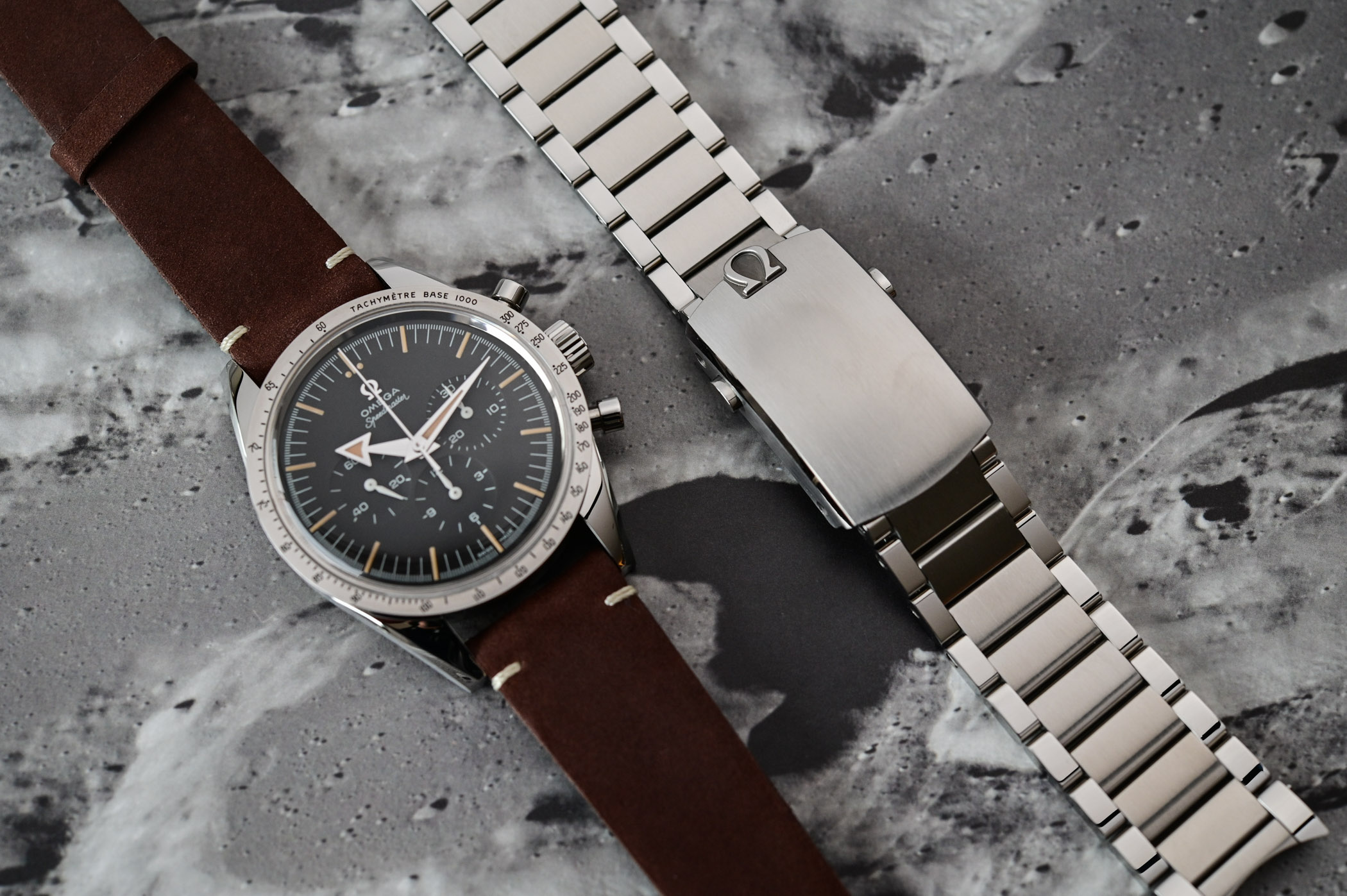
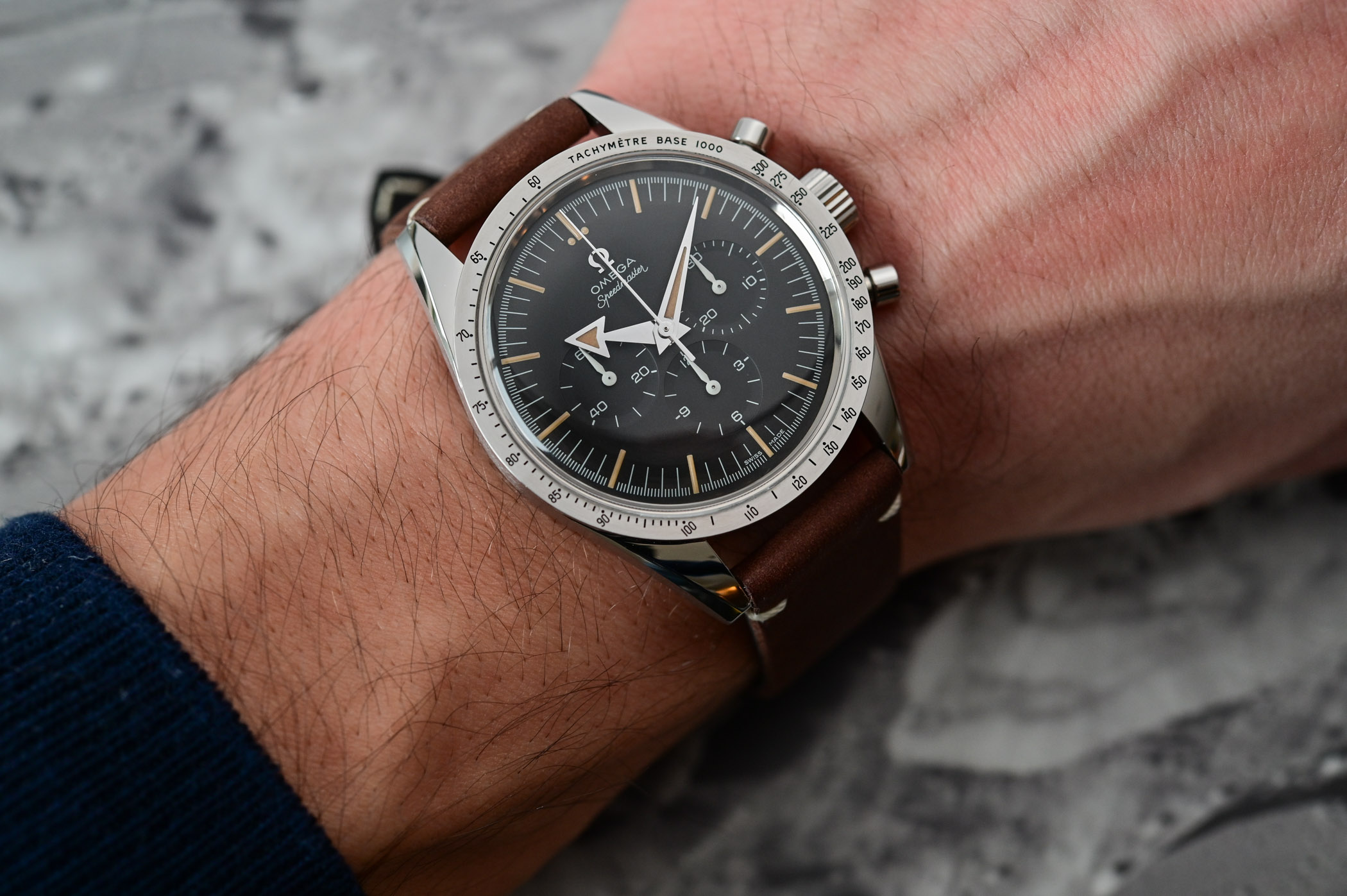
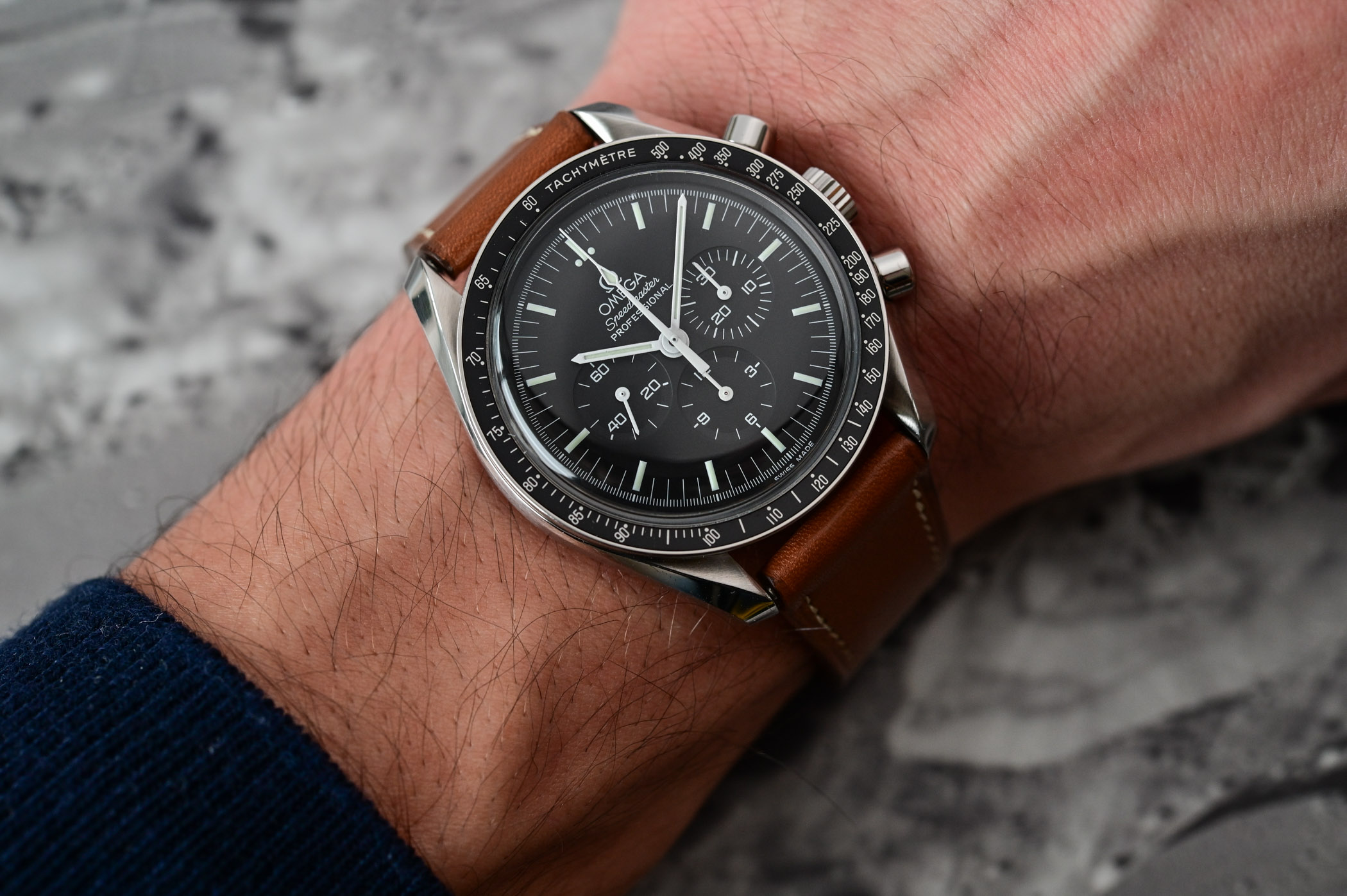

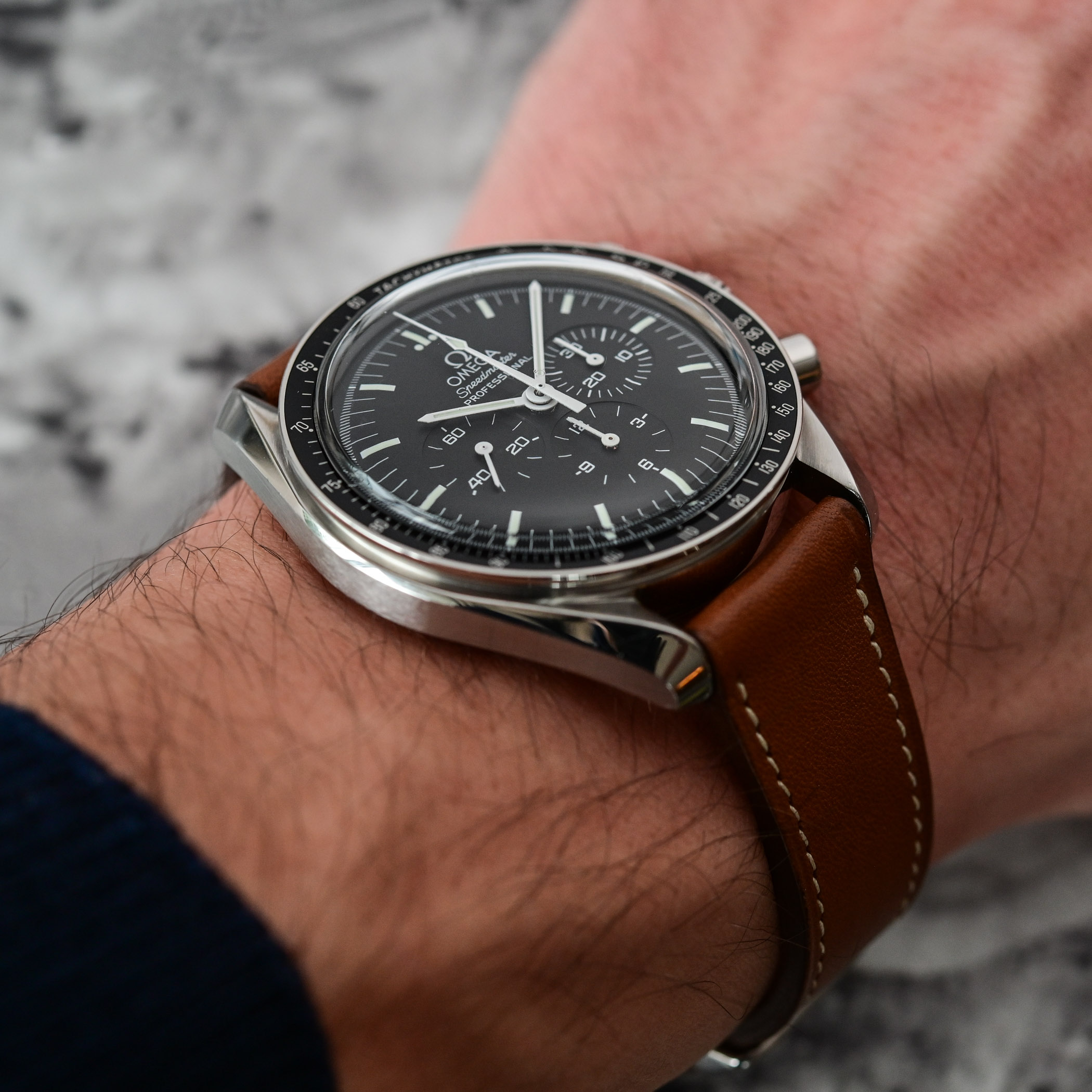
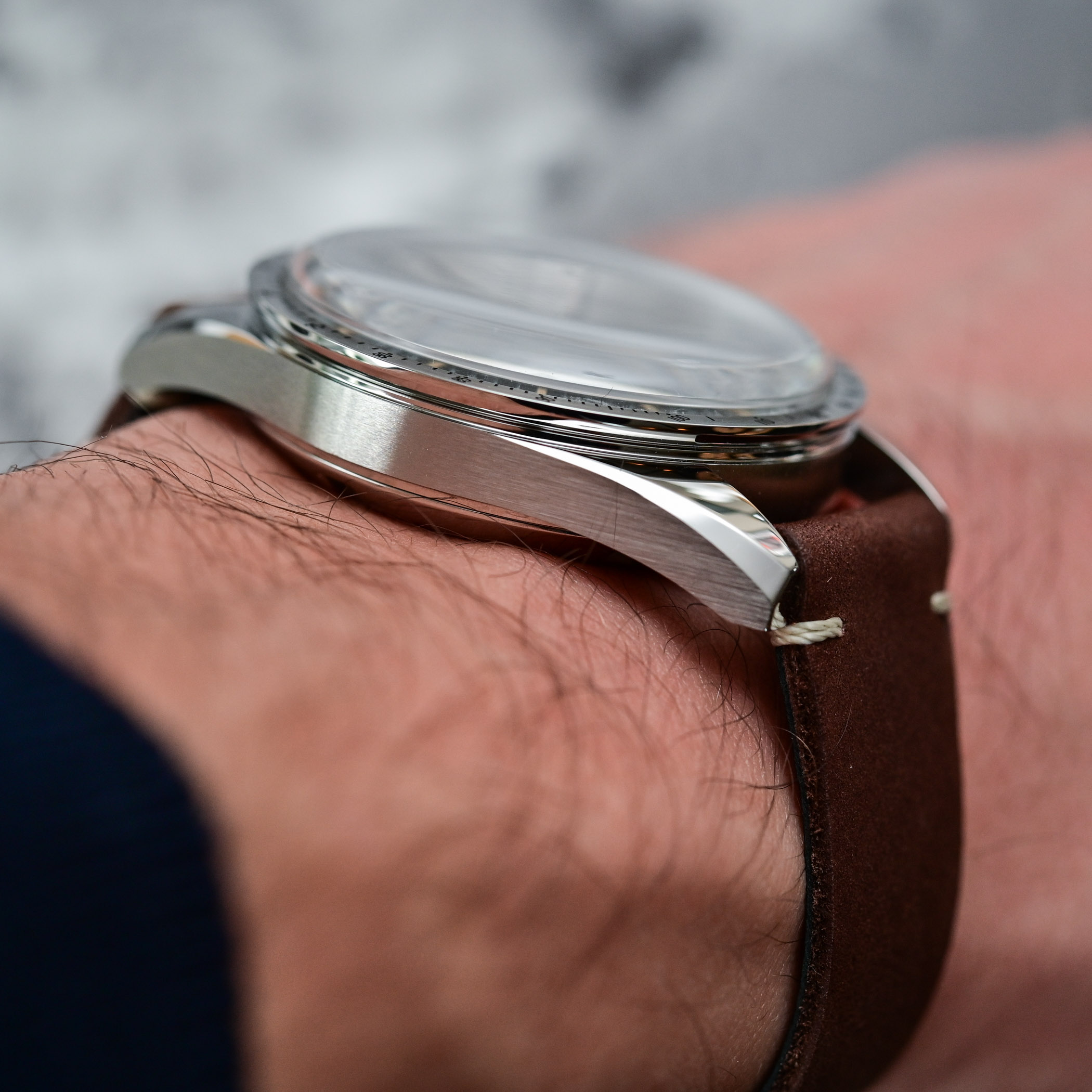
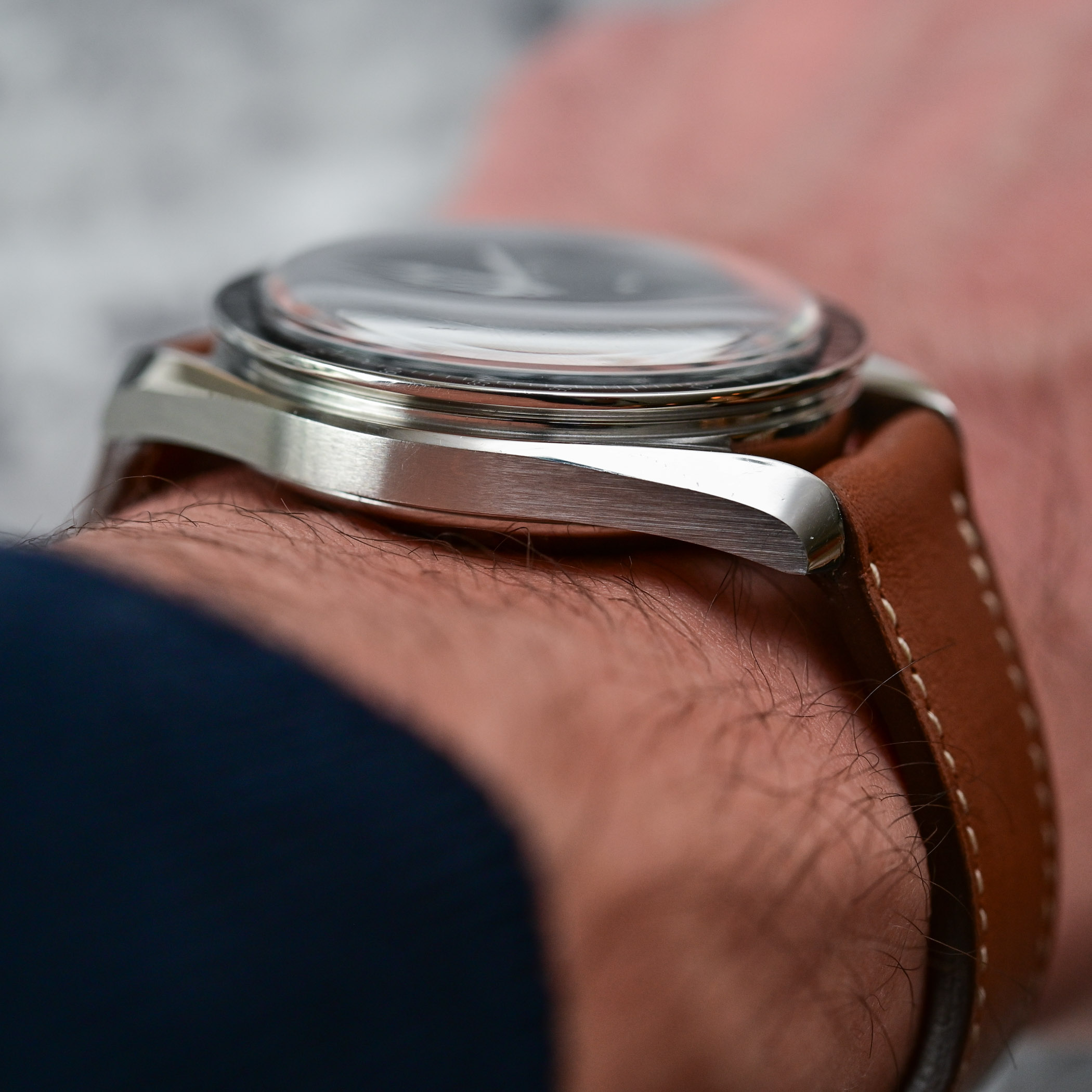




3 responses
Interesting comparison. Pretty one sided, the professional looks better in every detail, it would have been nice to see them on the bracelet(s). Seems like the master chronometer version is the best bet, probably the only way most people will every get to own a watch with a co-axial escapement.
@phil – unfortunately we didn’t have a bracelet for the professional, hence why we chose to have them both on leather. And yes the new Master Chronometer model is rather impressive in terms of content
Great and honest comparison. As an owner of both these exact watches (including the 3570.50, not it’s newer cosmetic upgrade), I can attest to having similar thoughts as this review but perhaps would give the edge to the 60th in terms of how it feels on my small 6.25 inch wrists and being overall, more pleasurable to wear. I’ve always maintained that not only was the 2998 remake an authentic attempt by Omega to honour its legacy without fuss or fanfare, but that this watch is still underrated in many ways. Thanks for the great article!